FRANCOPHONES













KLETT WORLD LANGUAGES is a publishing house specializing in print and digital instructional materials for learning and teaching world languages.
Our mission is to help students become global citizens by developing their intercultural and critical thinking skills through language learning. We aim to help students learn and use language in real-life situations by creating engaging and meaningful content that sparks their curiosity and motivates them to learn.
We strongly believe that teachers play a key role in language learning, and part of our mission is to support them and to provide ample opportunity for professional development.
Having them is not enough. We live by them.
Because everyone on the core KWL team has a background in education and works closely with educators and students, our commitment goes far beyond our daily work. We understand the needs of educators and students and we are passionate about looking for solutions and tools to help them succeed.
We are committed to providing high-quality print and digital content at affordable prices to all who want to learn a language. We guarantee lower prices for high-quality content and simple, easy-to-use technology.
We view languages as tools for communication and action. To learn a language and build authentic communicative competency, students need a realistic context, a true need to communicate, a focus on meaning, and the right linguistic resources. That is what we provide in our educational materials.
Our educational materials focus on the most current pedagogical methodology. They follow the ACTFL Guidelines for Proficiency, include Can-Do statements, and address the 5 Cs. Our digital resources provide original and authentic content via a simple and easy-to-use platform.
We see educators as our partners, and the core of our mission is to support them by providing professional development opportunities, highquality documents and activities, and instructor resources in an easily accessible format.
Our content is created to help students use language to communicate and interact with other communities and cultures both in the United States and abroad. Our books present a respectful, modern, and open-minded perspective of our world and its cultures that allows students to dismantle stereotypes and to cultivate an awareness of global concerns.
is a proficiency-based French program that speaks to today’s learners. It follows a communicative, task-based approach to learning through projects inspired by real-world scenarios. Our program offers authentic, engaging content that awakens students’ curiosity about the French-speaking world.
A student-centered, 21st century, comprehensive language and culture program
A communicative program where real-world language and projects take center stage
A fun, meaningful, and motivating approach to the French language
A gateway to culture and language throught authentic materials
An invaluable tool for differentiation and accessibility
A program striving to make learning engaging, relevant, and impactful

ACTFL World-Readiness Standards and a proficiency-based aproach lie at the heart of REPORTERS FRANCOPHONES:
Learning objectives in the form of Can-Do Statements leading to the completion of final projects
Essential questions for each lesson promote discussion and foster critical thinking skills
The three modes of communication —interpretive, interpersonal, and presentational— are integrated into the lesson sequences
A communicative approach to grammar in which students first focus on meaning, then on structures
Standards-based activities that integrate the 5 Cs throughout each unit
that incorporate the three modes of communication
REPORTERS FRANCOPHONES offers four levels that take students from a Novice Low to an Intermediate High proficiency level in French.
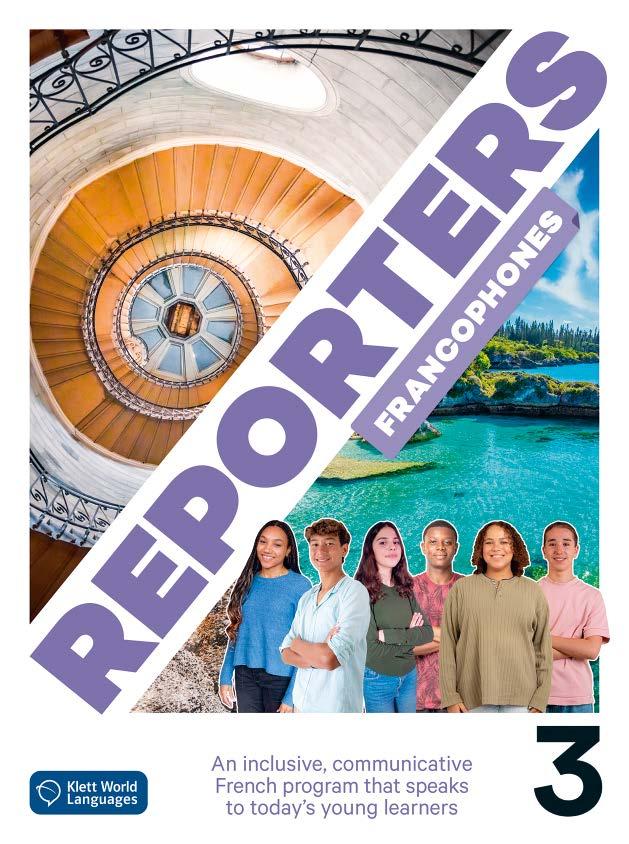
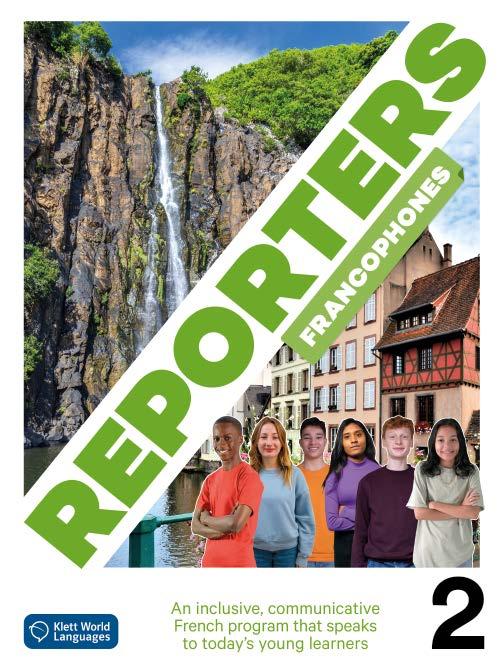
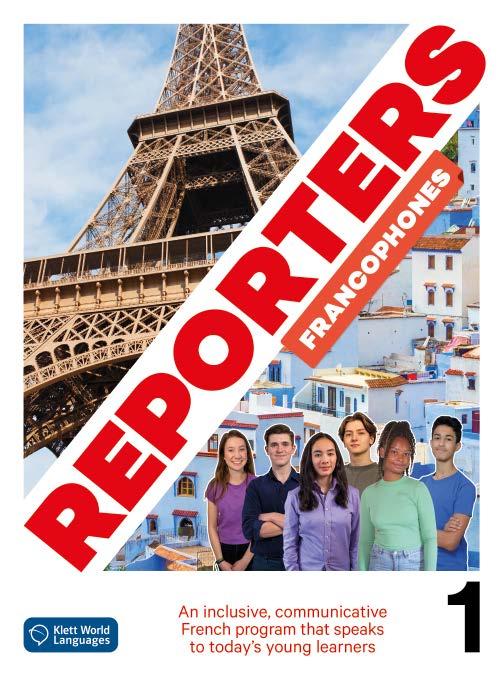
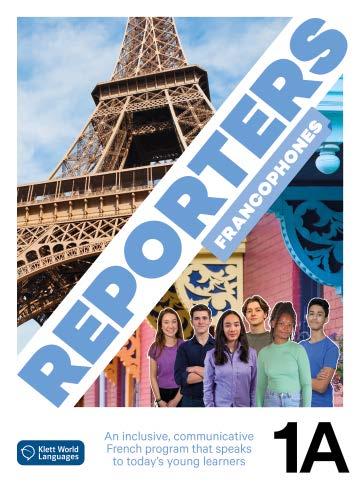
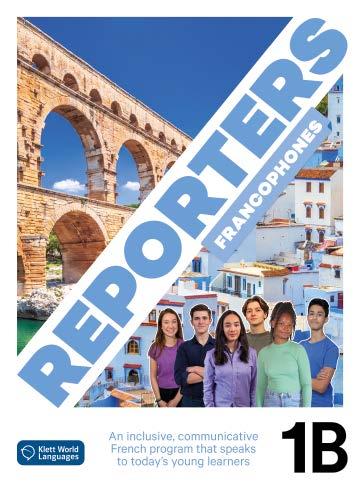
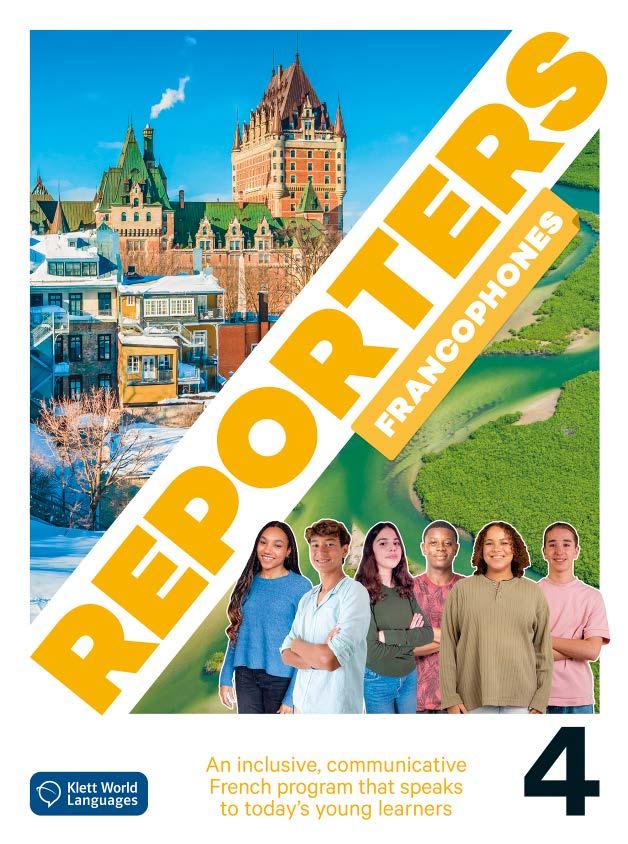
Series’ components include:
• Student Edition
• Workbook
• Annotated Teacher's Edition
• Digital versions on

Keep reading to learn more about each of the components!

The KWL Hub is a platform offering digital content and resources for students and teachers who work with REPORTERS FRANCOPHONES. It is designed with a clear purpose in mind: to improve teaching and learning experiences in middle school and high school environments with engaging content and helpful, user-friendly tools.
The KWL Hub is easy, flexible, and intuitive for all users. It includes a variety of resources, as well as robust functionalities that allow teachers to personalize the textbooks, assign homework, correct students’ work, offer feedback, create their own content, track the progress of each student, etc.
The KWL Hub is available as a website and as an app.
Compatible with:
- Smartphones and tablets: iOS and Android.
- Computers: Windows, Mac, Chrome OS and Linux.
VERSIONS OF THE STUDENT EDITION AND THE WORKBOOK
Interactive, browser-friendly versions with sizeadaptable pages that allow for a full digital learning experience. Students can write directly in the writing fields, record themselves, self-correct, re-do activities, attach files and send all of their work to the teacher.
The KWL Hub features the following components and resources:
• interactive version of the Student Edition
• interactive version of the Workbook
• eBook version of the Student Edition
• eBook version of the Workbook
• eBook version of the Teacher’s Edition
• assessment program
• grammar tutorials (videos)
• pronunciation tutorials (videos)
• scripts for all audio recordings
• closed captioning on all videos for students with hearing impairments
• audio recordings of all readings for students with visual impairments
• differentiation worksheets
• assessment rubrics
• self and peer assessment rubrics
• and many more!
EBOOK VERSIONS OF THE STUDENT EDITION, THE WORKBOOK, AND THE ANNOTATED TEACHER'S EDITION
eBook versions that allow teachers and students to browse through all the pages and grant them access to all of the video and audio files.
C’est parti!
• spelling and the French alphabet
• greeting people and saying goodbye
• introducing oneself
• expressing likes
• identifying and asking about objects
• asking for information
• apologizing
• borrowed French and English words
• classroom objects
• days of the week and months
• numbers from 0 to 31
• weather and seasons
• everyday words and expressions in French
• useful classroom expressions
STRUCTURES
• Je m’appelle…
• Tu aimes…? / J’aime… / Moi aussi.
• tu and vous

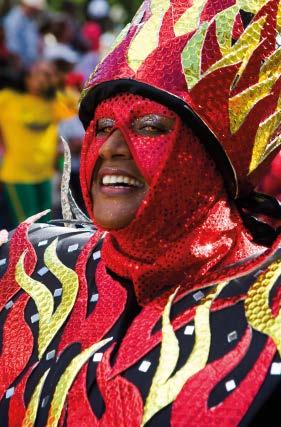
• Famous Francophone people, landmarks, and objects
• French state and city names in the United States
• Gestures and greetings
• Courtesy in French-speaking countries
• Seasons around the French -speaking world (both hemispheres)
• Celebrations and traditions in French-speaking countries


What are the different ways in which we greet each other?
What kinds of information do we typically share when introducing ourselves?
MINI-PROJET 1 Write a skit in French for your theater club
MINI-PROJET 2 Create your Carnet de français
PROJET FINAL Interview famous Francophone people for a talk show
How are origin and languages important in our lives?
What do our interests say about us?
MINI-PROJET 1 Create a map to represent your talent agency’s client profiles
MINI-PROJET 2 Create a poster to present your likes and dislikes
PROJET FINAL Create a profile for a social media platform
• greeting people and introducing oneself
• identifying professions and introducing others
• asking about ages and telling one’s age
• asking and responding to questions about personal data
VOCABULARY
• people
• polite expressions
• professions
• numbers up to 69
• mathematical equations
STRUCTURES
• subject pronouns
• the present tense of être
• noun agreement
• definite articles: le, la, l’, les
• the present tense of avoir
• the present tense of -er verbs
• question words
• expressing dates
• identifying countries and saying where you live
• identifying nationalities and professions
• identifying languages people speak
• identifying countries where French is spoken
• expressing likes and dislikes about activities
• expressing likes and dislikes about animals
VOCABULARY
• countries and nationalities
• languages
• continents
• leisure activities
• pets
STRUCTURES
• prepositions with country names
• adjectives of nationality
• indefinite articles: un, une, des
• c’est, il/elle est, ce sont, ils/ elles sont
• aimer, adorer + infinitive / noun
• the negative form
• noun agreement
• the pronoun on
What makes a family?
How does style reflect someone’s personality?
MINI-PROJET 1 Présenter les personnes de ton entourage
MINI-PROJET 2 Écrire un post sur le style d’une célébrité
PROJET FINAL Créer et présenter un personnage de BD et son entourage
• presenting family members and people who are close to you
• describing personalities
• asking for and giving information about family relationships
• describing what people wear
• describing someone’s physical appearance
VOCABULARY
• family relationships
• personality descriptions
• physical descriptions
• clothing and accessories
• style
• colors
STRUCTURES
• possessive adjectives
• adjective agreement
• adverbs of intensity
• the present tense of mettre
• languages spoken in Quebec
• greetings in Francophone countries
• famous Francophone Canadians
• le Cirque du Soleil
• la Fête nationale du Québec
• being Francophone in Canada
• celebrations in Francophone countries
• the TV series Lupin and Arsène Lupin
• Francophone celebrities
• la francophonie
• a TV series set in Paris
• the singer Pomme and concert venues in Paris
• e-sports in France
• la SPA, an animal protection organization
• animals in public places in France
• nature in Paris
• La famille Bélier, a French movie
• the Gainsbourg family
• the city of Grenoble, France
• shopping in France
• French fashion influencers
• street art in France
• the metric system
• Lou!, a French movie and comic book
• Kevin Germanier, a Swiss fashion designer
How can you thrive at school?
How can leisure activities bring us together?
MINI-PROJET 1 Créer un emploi du temps idéal ou horrible
MINI-PROJET 2 Participer à une journée des talents
PROJET FINAL Créer une vidéo de présentation de votre école
Bon appétit!
What makes a healthy diet?
How does food reflect Francophone cultures?
MINI-PROJET 1 Créer une vidéo de conseils pour bien manger
MINI-PROJET 2 Jouer une scène dans un restaurant
PROJET FINAL Imaginer un foodtruck de cuisine francophone
• identifying places in a school
What makes a city a good place to live?
How do the ways people shop differ across cultures?
MINI-PROJET 1 Présenter ta ville ou ton quartier à des touristes francophones
MINI-PROJET 2 Créer un vide-grenier dans la salle de classe
PROJET FINAL Créer un itinéraire touristique dans ta ville ou ta région
• describing school schedules
• asking and answering questions about school schedules
• saying when and how often you do activities
• naming food items
• making suggestions for healthy eating
• expressing preferences
• comparing eating habits
• ordering and paying for a meal in a restaurant
• shopping for groceries
• expressing needs
• expressing hunger and thirst
Bienvenue à Nantes COMMUNICATION
• describing places in a city
• telling what means of transportation you use
• locating places on a map
• asking for, giving, and following directions
• choosing a gift and telling where to buy it
• shopping for gifts and clothing
• asking about and telling prices
VOCABULARY
• school areas, subjects and schedules
• expressions of frequency
• levels of education
• sports and leisure activities
• places in town
STRUCTURES
• il y a / il n’y a pas
• possessive adjectives
• telling time
• question words
• Est-ce que...?
• the present tense of faire
• the present tense of aller
• contractions with articles
• the French grading system
• a lycée in Martinique
• school systems in Francophone countries
• school schedules in the Francophone world
• la Journée nationale du sport scolaire
• popular sports and activities in Francophone countries
• athletes with ties to Martinique
VOCABULARY
• foods
• meals and eating habits
• dining out and menus
• adverbs of quantity
• stores and merchants
• going grocery shopping
STRUCTURES
• partitive articles
• the manger and prendre
• il faut + infinitive
• the pronoun on (continued)
• the futur proche
• chez / à
• le couscous, a popular Moroccan dish
• popular dishes from around the Francophone world
• food products and specialties associated with French cuisine
• le dirham, the Moroccan currency
• customs in French restaurants
• the metric system (continued)
• les souks
• street food in the Francophone world
VOCABULARY
• places in town and directions
• means of transportation
• at the clothing store
• gift items
• numbers from 70 to 1,000
• types of stores
STRUCTURES
• prepositions of location
• the present tense of pouvoir
• the imperative
• ordinal numbers
• ce, cet, cette, ces
• stem-changing verbs: acheter and préférer
• museum discounts for young people
• different forms of transportation in Nantes
• Les Machines de l’île
• Le Lieu Unique, a contemporary cultural center
• the Achetons local! movement in France
• store hours and shopping etiquette
• places to shop in France
C’est reparti!

• identifying classroom objects
• understanding personal information
• describing languages, nationalities, and countries
• describing likes and dislikes and talking about leisure activities
• asking for and giving information about family relationships
• describing someone’s physical appearance and personality
• describing what people wear
• understanding a menu
• asking for information and giving directions
• classroom objects
• personal information and professions
• languages, nationalities, and countries
• numbers
• sports and leisure activities
• family relationships, physical description, and personality
• clothing items and colors
• food items
• means of transportation and vocabulary about cities
STRUCTURES
• definite and indefinite articles
• noun agreement
• the present tense of être, avoir, regular -er verbs, aller, préférer, prendre, and pouvoir
• faire and jouer + sports, games, and musical instruments
• the futur proche
• possessive adjectives
• demonstrative adjectives
• partitive articles
• à / chez
• prepositions of location


• famous Francophone people
• landmarks in Francophone countries
• school supplies in French schools
• dishes from Francophone countries
• Francophone cities

How do daily routines differ around the world?
How do young people enjoy their free time?
MINI-PROJET 1 Créer un vlog sur une journée type
MINI-PROJET 2 Discuter avec des amis/es pour organiser une sortie
PROJET FINAL Présenter un programme d'activités pour un week-end en Belgique
• asking and responding to questions about daily schedules
• asking and responding to questions about your daily routines
• exchanging opinions about music
• describing what people do at the weekend
• proposing activities, accepting, refusing, and offering alternatives
VOCABULARY
• parts of the day
• meals and daily routines
• expressions for telling time and linking words
• music genres
• interests and fun activities
• expressions of frequency
• expressions to propose, accept, and refuse activities
STRUCTURES
• the present tense of finir, sortir, lire, and dormir
• reflexive verbs
• the pronoun y
• the present tense of venir and vouloir
• stressed pronouns
What are the benefits of travelling?
What makes traveling memorable?
MINI-PROJET 1 Créer une brochure pour des touristes francophones
MINI-PROJET 2 Décrire des expériences de vacances marquantes
PROJET FINAL Créer un carnet de voyage à la Réunion
• describing the geography of a region or country
• expressing preferences about travel
• promoting sustainable tourism
• recounting a past travel experience
• describing a travel route
VOCABULARY
• geography and landscapes
• trips and sustainable tourism
• tourist activities
• means of transportation
• accomodations
• adjectives to describe experiences
STRUCTURES
• adjective placement
• the present tense of connaître and savoir
• the passé composé with avoir and être
How has daily life changed in the last century?
How do experiences and memories influence us?
MINI-PROJET 1 Créer un poster sur l'enfance
MINI-PROJET 2 Raconter une anecdote à l'aide d'un sketchnote
PROJET FINAL Participer à un concours de nouvelles
• describing education in the past
• describing objects from the past
• narrating a past experience
• asking for additional information
• understanding and writing a biography
• understanding and telling a story in the past
VOCABULARY
• education, games, and objects in the past
• vocabulary and expressions related to the past
• numbers above 1,000
• conversational reactions
• expressions used in biographies
• past tense markers and logical transition words
STRUCTURES
• the imparfait
• negative forms: ne ... jamais, ne ... rien, ne ... personne, ne ... aucun/e, ne ... plus
• the passé composé vs the imparfait
• dining habits of Belgians
• famous Belgian comics and artists
• the city of Brussels
• festivals in Belgium
• things to do in Brussels
• the Belgian music scene
• seasons in the Southern Hemisphere
• Réunion Island
• Unesco World Heritage sites at Réunion Island
• the festival Embarquement immédiat
• outdoor activities at Réunion Island
• Francophone travel literature
• games and education in Francophone countries in the past
• La Boum, a famous French movie
• the city of Marseille
• French writer Marcel Pagno
• Le Temps des Secrets, a French novel and movie
• Le Petit Prince, a novel by Antoine de Saint-Exupéry
• Francophone literature about Marseille
What factors contribute to emotional well-being?
What factors influence physical health?
MINI-PROJET 1 Animer un forum sur le bien-être des adolescents
MINI-PROJET 2 Présenter les bénéfices physiques et émotionnels d'une activité que vous aimez
PROJET FINAL Créer des vidéos pour une campagne sur la santé physique et psychologique
• expressing emotions and telling how you feel
• asking and telling people what they need, should or must do to feel better
• describing the health benefits of physical activity
• giving advice
• describing symptoms
• asking and giving advice about health and well-being
VOCABULARY
• emotions and moods
• personal well-being, relationships, and healthy lifestyle habits
• expressions for giving advice
• parts of the body
• physical symptoms, ailments, and remedies
• useful phrases at the doctor's office
STRUCTURES
• the imperative of irregular and reflexive verbs
• relative pronouns
• the pronoun en
• the interrogative form: question formation with inversion
How do homes reflect the culture of a country?
How do households in different countries share chores?
MINI-PROJET 1 Imaginer le logement parfait pour une famille
MINI-PROJET 2 Créer une campagne sur le partage des tâches ménagères
PROJET FINAL Faire une simulation de colocation et de l'organisation des tâches ménagères
• describing households and buildings
• asking for information and
• describing housing needs
• expressing preferences about interior design and decoration
• asking for help with chores
• telling what you have to do
• understanding a campaign about sharing chores
VOCABULARY
• types of homes
• parts of a house
• furniture
• style, decoration, and materials
• adjectives to describe a room
• household chores STRUCTURES
• Il n'y a que...
• comparatives
• superlatives
• the present tense of devoir
• the verbs ending in -ayer, -oyer, and -uyer
• être en train de...
• venir de...
monde meilleur
What do people strive to improve their communities?
How will our actions impact the world in the future?
MINI-PROJET 1 Créer une affiche pour promouvoir une école plus écologique
MINI-PROJET 2 Animer un débat sur la vie du futur
PROJET FINAL Créer un magazine sur le futur
• understanding a recycling campaign
• giving and supporting your opinion about helping others
• reacting and making predictions about the future
• imagining and describing lodging in the future
• making predictions about the future of our planet
VOCABULARY
• recycling and materials
• community life and city rules
• phrases to express an opinion
• changes
• new technologies and types of energy
• future tense markers
STRUCTURES
• the present tense of jeter
• direct object pronouns
• indirect object pronouns
• the future tense
• si clauses in the present and future
• the city of Bordeaux
• French wellness campaigns
• the happiest places to live in the Francophone world
• the French healthcare system
• writer and former Senegalese president, Léopold Sédar Senghor
• houses in Dakar
• Senegalese architecture and history
• a Francophone campaign about equality at home
• Senegalese art
• recycling in France
• volunteer associations
• the city of Strasbourg
• the future of housing
• cities of the future
C’est reparti!
• comparing daily schedules
• describing past travel experiences
• describing what cities used to be like in the past
• making a grocery shopping list
• expressing emotions and giving advice
• describing and comparing housing and holiday accommodations
• describing housing in the future and making predictions about the future
• discussing sustainability and solidarity
VOCABULARY
• daily routines
• activities
• linking words
• landscapes
• trips and experiences
• means of transportation
• places in a city
• food and quantities
• feelings
• health and well-being
• housing
• the environment
• technology and society
• clothing
• helping others
STRUCTURES
• reflexive verbs
• the passé composé
• the imparfait
• the pronoun y
• partitive articles
• adverbs of quantity
• the present tense of the verb devoir
• the imperative

• the relative pronouns qui and que
• comparatives and superlatives
• the futur simple
• making hypotheses: si clauses + futur simple
• direct and indirect object pronouns


• famous Francophone people
• landmarks in Francophone countries
• French cities in the past and the present
• dishes from Francophone countries
• Celebrations and traditions in French-speaking countries

What is important to teenagers today?
How do we build friendships?
MINI-PROJET 1 Présenter un collage sur ta vie et tes centres d'intérêt
MINI-PROJET 2 Enregistrer un podcast pour raconter une rencontre amicale
PROJET FINAL Créer un dossier de présentation des personnages d'une web-série
• understanding young people’s personal preferences, their interests, and their concerns
• describing positive and negative aspects of being a teenager
• describing fictional characters and their relationships
• understanding and telling personal stories
• telling how you met someone special
VOCABULARY
• interests and concerns
• personalities
• adolescent life
• feelings
• stages of life
• relationships
• linking words
• expressions for reacting to an anecdote
STRUCTURES
• emphasis with ce que and ce qui
• adverbs ending in -ment
• reciprocal verbs
• past participle agreement with avoir
• the past tenses: the imparfait and the passé composé
L'art de faire la fête
What makes French gastronomy special?
How do celebrations reflect the culture of a society?
MINI-PROJET 1 Participer au casting d'une émission de cuisine
MINI-PROJET 2 Présenter une fête de ton pays
PROJET FINAL Préparer une exposition pour présenter une fête francophone
• describing traditional dishes, their ingredients, and their history
• understanding and giving cooking instructions
• understanding documents about food waste and finding solutions
• discussing social customs
• exchanging opinions about celebrations
VOCABULARY
• food
• tastes
• food waste
• expressions for cooking
• expressions of obligation, permission, and prohibition
• social habits and celebrations
• expressions for habitual actions
STRUCTURES
• impersonal structures
• pronouns with commands
• the pronoun en
• interrogative forms
• indefinite adjectives
What is the value of the Internet for young people today?
What are our responsibilities as digital citizens?
MINI-PROJET 1 Créer un test pour savoir si on est «accro» au portable
MINI-PROJET 2 Créer un guide de bonnes pratiques sur Internet
PROJET FINAL Participer à un débat sur l'authenticité sur Internet
• understanding and sharing information about internet habits
• exchanging opinions about people's behavior on social media
• recommending best practices for being online
• recognizing misinformation
• writing emails efficiently and politely
VOCABULARY
• social media and activities on the internet
• expressions to agree and disagree with others
• digital responsibility, technology, and news
• useful phrases for writing emails
STRUCTURES
• gerunds
• the present subjunctive
• the indicative or the subjunctive to express purpose, opinions, doubt or certainty
• the subjunctive and the infinitive to express recommendations
• a Tunisian Internet platform and radio station for teens
• concerns of Francophone young people
• interesting places to visit in and near Tunis
• Les Bracelets rouges, a popular French TV series
• the French classic novel Le grand Meaulnes
• the making of the Tunisian movie Sous les figues
• Diego Alary, a young French chef
• dishes from Francophone countries
• French zero-waste campaigns
• food waste apps
• the Fête du citron
• the Fête de la musique
• French customs
• Louisiana and its celebrations
• Canadian illustrator Bach and her comic book Tant pis pour les likes
• Quebec's will to protect French and avoid Anglicisms
• Canadian influencers
• French and Canadian commissions regulating data privacy laws
• April Fools' Day
• netiquette
• digital arts
How can we develop our skills and abilities for the future?
How can we prepare for our future careers?
MINI-PROJET 1 Créer et présenter une carte mentale sur tes projets
MINI-PROJET 2 Répondre à une annonce avec ton CV vidéo
PROJET FINAL Organiser un échange de services
• describing skills and abilities
• identifying the professions that suit you best
• explaining what you would like to do in the future
• understanding a job offer and discussing the kind of job you would like to have
• understanding a video résumé
VOCABULARY
• abilities, skills, and attributes
• professions and personality traits
• time expressions
• the world of work
STRUCTURES
• adverbs of manner bien, mal, vite
• demonstratives pronouns
• the conditional tense
• relative pronouns
• si + present tense, present tense or imperative
• the subjunctive to express wishes and hopes
What can we learn from traveling?
What is it like to have more than one cultural identity?
MINI-PROJET 1 Créer une brochure pour donner des conseils pour un échange linguistique
MINI-PROJET 2 Écrire le récit biographique d'une personnalité ayant une histoire de migration
PROJET FINAL Participer à un forum pour encourager des élèves à partir à l’étranger
• identifying reasons to study abroad and encouraging people to do so
• understanding and giving advice for going abroad
• understanding and telling stories about past events
• understanding and recounting changes related to immigration experiences
• understanding the experience of a teenager from an immigrant family
VOCABULARY
• travel
• living abroad experiences
• clothing and luggage
• migration
• biculturalism
• time markers
STRUCTURES
• the pronoun dont
• possessive pronouns
• the plus-que-parfait
• negative forms
• past tenses
What makes books, TV series, and movies interesting?
How does art reflect the perspectives of its cultures?
MINI-PROJET 1 Créer un recueil de recommendations de livres de la classe
MINI-PROJET 2 Organiser une mini exposition de tableaux
PROJET FINAL Décrire un tableau et imaginer une histoire
• a professional fair in Tahiti
• jobs in France
• media outlets about professional orientation
• remarkable women from French Polynesia
• summer jobs in France
• the Service Civique
• a recruitment campaign for healthcare workers
• an inclusive job: sign singing
• linguistic exchanges
• tips to prepare to study abroad
• the Cité Internationale Universitaire de Paris
• immigration in France
• the Musée de l'histoire de l'immigration
• comic books describing immigration experiences
• taking a test about literary genres and understanding descriptions of imaginary situations
• summarizing the plot of a story
• understanding and retelling someone else's opinion of a book
• describing a painting and making hypotheses about what is happening in the scene
• narrating a story about an event in the past
VOCABULARY
• literary and film genres
• book and film reviews
• recommendations
• words and expressions to summarize a plot
• words and expression to describe art
• words and expressions to describe images
• linking words
STRUCTURES
• si + imparfait, conditional
• reported speech
• passive voice
• Francophone literature
• Francophone movies and TV series
• art from Francophone countries

Level 4 coming in June 2025!
REPORTERS FRANCOPHONES 4 follows the guiding principles of the preceding levels, offering real-world tasks that stimulate meaningful communication based on authentic documents and engaging content.
With REPORTERS FRANCOPHONES 4, learners improve their language skills while deepening their knowledge of the culture of the French-speaking world.
This volume is aligned with the ACTFL World-Readiness Standards for Learning Languages and includes AP® and IB® task types and themes.
Stay tuned for updates on level 4!
t En quoi consiste une alimentation équilibrée? What makes a healthy diet?
t Comment la nourriture reflète les cultures francophones? How does food reflect Francophone cultures?
Two questions (one per lesson) that guide students throughout the unit by putting the main topics of both lessons into perspective. These questions are grounded in the core of the lessons and develop critical thinking skills.


Comment ça va?
Je m’appelle Yassir et j’habite à Marrakech, au Maroc.
Reporters’ video
Each unit is built around a reporter, a teenager from a French-speaking country. In the video, the reporters introduce themselves, their country, and the main topics of the unit.

Mini-projet 1
Créer une vidéo de conseils pour bien manger
Mini-project and Project final
The two Mini projects (one per lesson) and the Project final (one per unit) are real-world projects in which students will use the grammar, vocabulary, and communicative skills they learned in each lesson.

Mini-projet 2
Jouer une scène dans un restaurant
PROJET FINAL Imaginer un food truck de cuisine francophone
Information on the featured country or region
A map of the reporters’ country with information, statistics, and interesting trivia facts.
On voyage à Marrakech, au Maroc, pour parler des aliments, des repas, des restaurants et des courses.
Opening activities
Activities based on on the short text and the video about the reporters’ country or region.
Brainstorming!
• Qu’est-ce que tu connais du Maroc?
• Qu’est-ce que tu vois sur la photo? Où sont les personnes?
• Quelles spécialités culinaires du Maroc tu connais?
Curiosités:
• Une partie du Sahara est située au Maroc. Le désert du Sahara est le plus grand désert chaud du monde.
• On appelle Marrakech «la ville rouge» parce qu’une grande partie de ses immeubles et de ses maisons sont rouges.
A. Regarde la vidéo et dis si ces phrases sont vraies ou fausses.
1. La capitale du Maroc est Marrakech.
2. Aux souks, on peut trouver des vêtements.
3. La famille de Yassir mange du couscous deux fois par semaine.
4. Yassir adore le basket-ball.
B. Qu’est-ce que tu veux faire au Maroc? Pourquoi?
IN THIS LESSON, YOU WILL…
• name food items and give suggestions for healthy eating
• describe and compare eating preferences
Lesson overview
A summary of the lesson goals: the first column presents the communicational goals, the second presents the vocabulary and grammar structures, and the third shows the cultural aspects of the lesson.
BY USING...
• adverbs of quantity
• partitive articles
• the present tense of the verbs manger and prendre
• il faut + infinitive
• the pronoun on
• vocabulary for food and food groups, eating habits, preferences, and meals
AND YOU WILL FIND OUT ABOUT…
• couscous, a popular Moroccan dish
• dishes from Francophone countries
• food products and specialties associated with French cuisine
MINI-PROJET 1: Créer une vidéo de conseils pour bien manger
Authentic resource
A diverse choice of authentic realia (photos of famous landmarks, movie posters, awareness campaigns, etc.) relates to the country/region and lesson topic, and provides the main basis for the Pour commencer activities that follow.
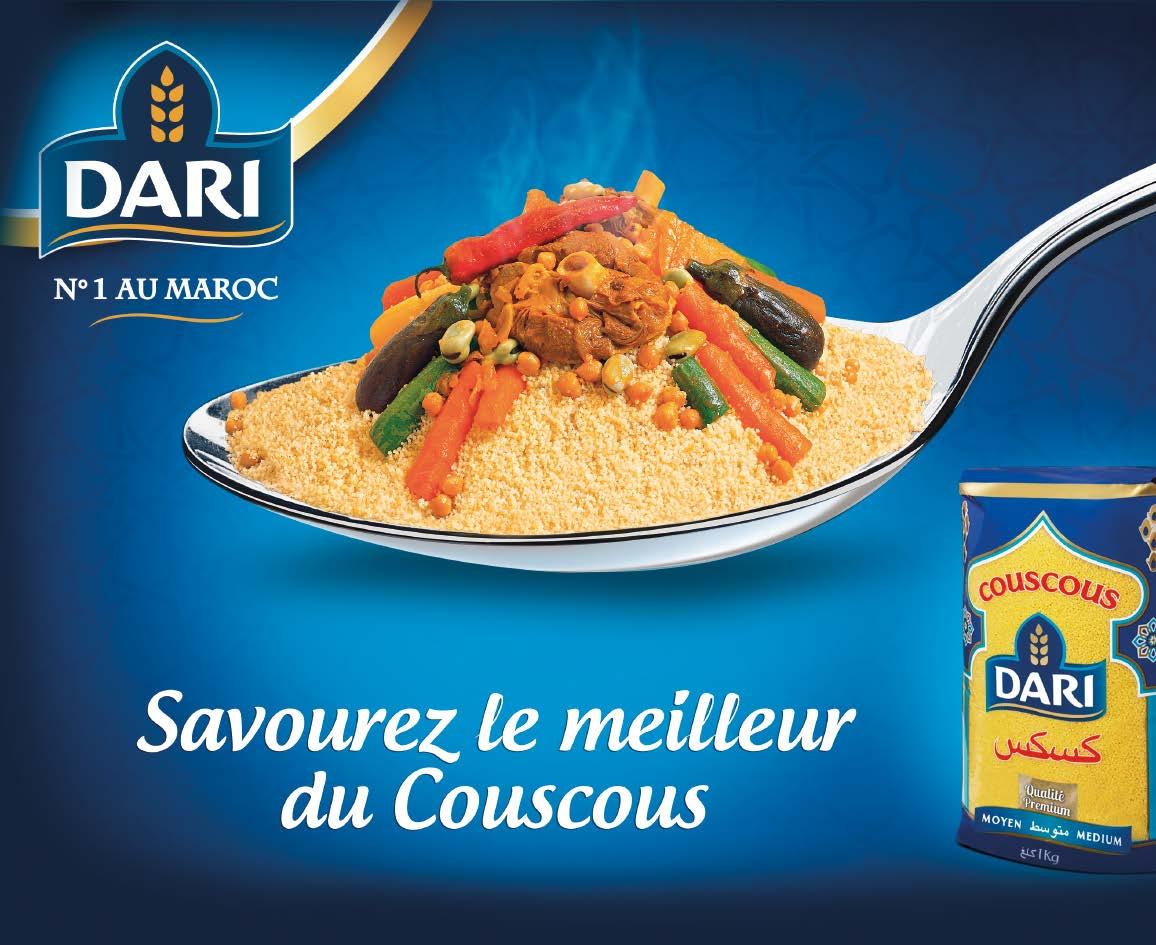

LIRE ET PARLER
A. Observe la publicité de la page précédente. Dis quels ingrédients il y a dans le couscous.
Je crois qu’il y a…






de la viande des œufs du citron des carottes du couscous des tomates
B. Lis le chat.
Vérifie ta réponse à l’activité A.
Yassir
Culture
Highlighting one of the 5 C’s with a short text about a specific cultural element.
1 Are you familiar with (it)?

Salut! Aujourd’hui, c’est vendredi, et c’est le jour de mon plat préféré. 12:25
Louise C’est du couscous, non? 12:30
Yassir Oui! Tu connais�? 12:32

Louise Oui! On mange aussi du couscous en Algérie, en Tunisie et… en France! 12:35
Max Yassir, il y a quels ingrédients? 12:35
Yassir
Du couscous, de la viande, des carottes… 12:38
5Cs Question
A short question based on Cultural Comparisons or Connections.
Le couscous est le plat national du Maroc. Il est composé de semoule de blé (couscous) cuite à la vapeur (steam cooked) avec de la viande et des légumes (vegetables). Le couscous est célèbre dans d’autres pays africains. C’est aussi l’un des plats préférés des Français.
COMPARAISON CULTURELLE
Quel plat typique de ton pays est célèbre dans le monde entier?
Max 12:42

C. Lis à nouveau le chat.
Réponds aux questions.
1. Quel est le plat préféré de Yassir?

Reporters’ chat
Text messages in which the six reporters talk about a featured authentic resource. The chat is a fun and relatable way to introduce the main topic of the unit and some basic vocabulary as well.
2. Quel jour Yassir mange son plat préféré?
3. Dans quels pays est-ce qu’on mange le couscous?
t I can name food items and give suggestions for healthy eating.
3
LIRE ET PARLER
CONNEXIONS: NUTRITION Observe les groupes d’aliments.
Classe les 12 aliments dans le groupe correct.
Le yaourt: produits laitiers
Activity Type
Each activity is introduced by one or more verbs (lire, écrire, etc.) which will help students understand which communication skill(s) will be required in the activity.



Can-Do Statement
A clearly-defined sentence to allow students to set their learning goal for this section and chart their progress towards language proficiency.
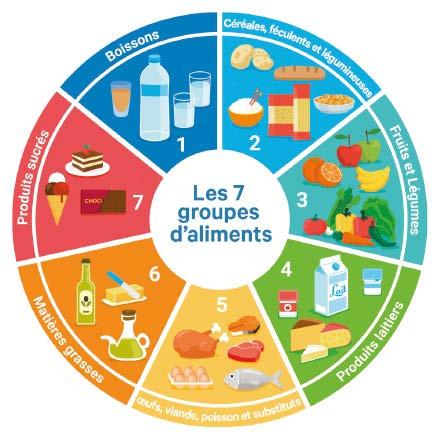


chocolat les dattes (f.)

jus de fruits

Jeu
(f.)

poulet

pommes de terre (f.)

bananes (f.)

oranges (f.)
Games offer further training on the studied language structures.

pain les courgettes (f.)
LES GROUPES
D’ALIMENTS Food groups
• les boissons beverages
• les céréales, féculents et légumineuses grains, starches, and legumes
• les fruits et légumes fruits and vegetables
• les matières grasses fats
• les œufs, la viande, le poisson, les substituts eggs, meat, fish, and substitutes
• les produits laitiers dairy products
• les produits sucrés sweets
LA NOURRITURE Food
• le beurre butter
• les carottes (f.) carrots
• le citron lemon
• l’eau (f.) water
• le fromage cheese
• les gâteaux (m.) cakes
• les glaces (f.) ice cream
• le lait milk
• les lentilles (f.) lentils
• les pâtes (f.) pasta
• les poivrons (m.) bell peppers
• les pommes (f.) apples
• le riz rice
• les tomates (f.) tomatoes
1. In groups, form a circle.
2. One student names a food group out loud and tosses a ball to another student.
3. The student who catches the ball names a food item from that food group and tosses the ball to another student who catches it and names a different food item.
4. Keep tossing the ball until no more food items can be named for that group.
5. Start again with another food group.
Les fruits et légumes!
Les oranges!
A list of the active vocabulary on the double-page spread, including a reference to the Lexique section at the end of the lesson.
LIRE ET PARLER
LEÇON 1
Workbook pp. 112-114
Workbook
GRAMMAIRE
A. Observe le poster ci-dessous.
CONNEXIONS: NUTRITION
Quel est son objectif?
1. Promouvoir (promote) un supermarché.
2. Proposer des idées de recettes.
3. Donner des conseils (advice) en nutrition.
Collaboration activities
Activities that can be completed in pairs or in small groups.
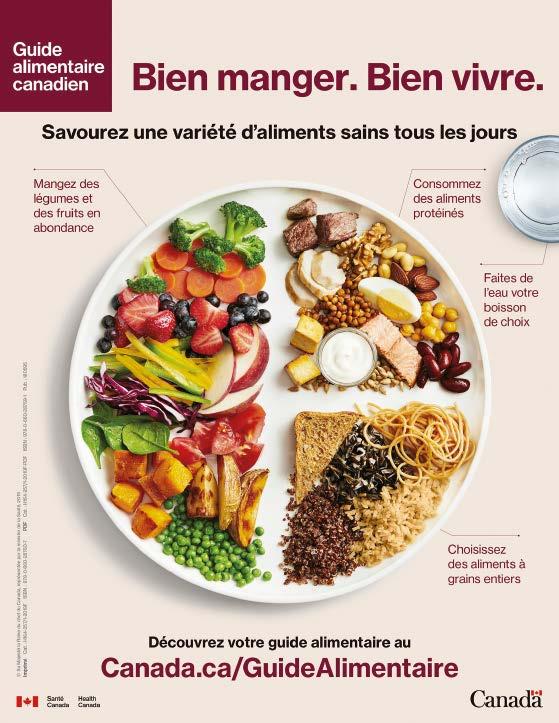
B. À deux, observez à nouveau le poster. Listez les aliments que vous reconnaissez sur la photo.
J’observe la langue
A reference to the corresponding Workbook pages.
ADVERBS OF QUANTITY
• trop de too much/too many Je mange trop de pain.
• beaucoup de a lot of/many Je mange beaucoup de légumes.
• assez de enough Je mange assez de céréales.
• (un) peu de few/little/a bit of
Je mange (un) peu de fruits.
GIVING SUGGESTIONS:
IL FAUT + INFINITIVE
Il faut manger des légumes tous les jours.
You should eat vegetables every day.
Il ne faut pas boire beaucoup de jus d’orange.
You shouldn’t drink a lot of orange juice.
GRAMMAIRE pp. 198, 202
J’observe la langue
C. Lis les conseils du poster. Réécris les conseils comme dans l’exemple.
Il faut manger des légumes et des fruits en abondance.
Grammaire
Concise, color-coded presentations and examples of the grammatical structures of this section, along with a reference to the page where a more detailed explanation is given.
This icon indicates that students will analyze an aspect of the language in order to understand it better. Students will also be asked to compare French with English and work out the rules by themselves.
D. Et toi? Quels conseils du guide est-ce que tu respectes?
Je mange…
LES HABITUDES
ALIMENTAIRES Eating habits
• manger to eat
Je mange de la viande.
• boire to drink
Je bois beaucoup d’eau.
LEXIQUE p. 205
t I can describe and compare eating preferences.
Recopie le tableau et complète-le. 6
A. Lis les textes sur les habitudes alimentaires des trois reporters.
Text recording
All of the texts are available as audio recordings to allow students to work on pronunciation and intonation. These recordings are especially helpful for auditory learners.

Yassir · 16 ans
Je mange de tout: des fruits, des légumes, de la viande, du poisson... J’utilise de l’huile pour cuisiner. J’adore le tajine de poulet avec des olives et du citron.


· 16 ans
Je suis végétarienne: je ne mange pas de viande et pas de poisson. J’aime le tofu. J’adore les galettes. À l’intérieur, je mets un œuf, du fromage et des légumes.
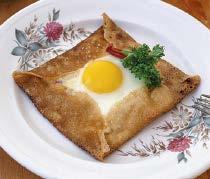

· 16 ans
J’aime manger dans les fast-foods. Je mange de la viande, des pâtes et je ne mange pas assez de légumes. Mon plat préféré est la poutine: des frites avec du fromage et une sauce brune.
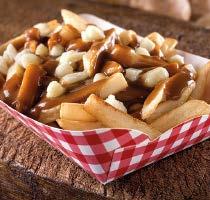
Yassir Il mange de tout…
J’observe la langue
B. Read these sentences. Translate them into English. What is the equivalent of the words in bold?
Je mange de la viande. J’utilise de l’huile.
Je mets du fromage.
Je mange des légumes.
C. Écris un texte sur tes habitudes alimentaires.
GRAMMAIRE
PARTITIVE ARTICLES du fromage de la viande de l’huile des légumes, des frites
THE PRESENT TENSE OF THE VERB MANGER To eat je mange tu manges il/elle/on mange nous mangeons vous mangez ils/elles mangent
GRAMMAIRE pp. 199, 201
LES HABITUDES ALIMENTAIRES
• être végétarien/ végétarienne to be a vegetarian
• être végétalien/ végétalienne to be a vegan
• manger équilibré to eat a balanced diet
• manger dans un fast-food to eat in a fast food restaurant
• manger de tout to eat everything
LA NOURRITURE
• les frites (f.) french fries
• les olives (f.) olives
• la sauce sauce
• le tofu tofu
LEXIQUE pp. 204-205
Materials and worksheets linked to some of the activities of the doublepage spread, like Differentiation Worksheets and the e-Workbook.
A. Écoute Yassir parler des habitudes alimentaires au Maroc. Associe le nom du plat à la photo correspondante.
Listening activity
la soupe harira les crêpes msemen la salade chlada la salade de fruits
An activity based on an audio recording.

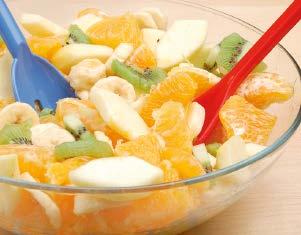
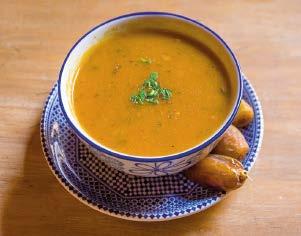
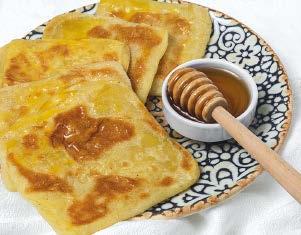
La photo 1, c’est…
B. Écoute à nouveau l’audio.
Dis à quel repas et à quelle heure Yassir et sa famille mangent les plats de l’activité A.
Ils mangent la soupe harira au…
C. À l'aide de l'audio et des photos, identifie des ingrédients pour chaque plat.
Communication examples Examples of answers serve as a guide for students. They are always written in blue and the grammatical structures are highlighted in yellow.
Défi
Dans la salade chlada, il y a des tomates…
A more challenging activity.
INTERAGIR À deux, comparez les horaires des repas dans votre pays ou votre région avec les horaires des repas de Yassir. Dites ce que vous mangez. Dans mon pays, on prend le petit déjeuner vers…
LEÇON 1
Workbook pp. 115-117
LEXIQUE
LA NOURRITURE
• les concombres (m.)
• le miel honey
• les oignons (m.)
• le thé à la menthe mint tea
LES REPAS Meals
• le petit déjeuner / prendre le petit déjeuner breakfast / to have breakfast
• le déjeuner / déjeuner lunch / to have lunch
• le goûter / goûter afternoon snack / to have an afternoon snack
• le dîner / dîner dinner / to have dinner
• On déjeune entre 12h et 13h. We have lunch between 12 and 1 pm.
• On dîne vers 20h. We have dinner at around 8 pm.
EXPRIMER SES GOÛTS
Expressing preferences
• J’adore les fruits.
• Moi aussi! Me too.
• Moi, non. I don’t.
• Je n’aime pas la viande.
• Moi non plus. Neither do I.
• Moi, si. I do.
LEXIQUE pp. 204-205
GRAMMAIRE
THE PRONOUN ON
Au Maroc, on prend le petit-déjeuner…
= Au Maroc, les gens (people) prennent le petit déjeuner…
THE PRESENT TENSE OF THE VERB PRENDRE on prend
GRAMMAIRE pp. 201, 203

CONNEXIONS: SCIENCES SOCIALES
t I can understand the main idea and some details in an article about food products and specialties associated with French cuisine.
Le magazine des Reporters

par Yassir Benjelloun, reporter de Marrakech, Maroc
Moi, j’adore la cuisine marocaine, mais j’aime aussi la cuisine française! On associe à la cuisine française des plats et des produits typiques, mais est-ce que les Français mangent vraiment ces produits et ces plats?
A magazine feature written by one of the reporters. Each one includes a short article that is adapted to the students’ reading level. The articles are about relevant cultural topics of each reporters country.
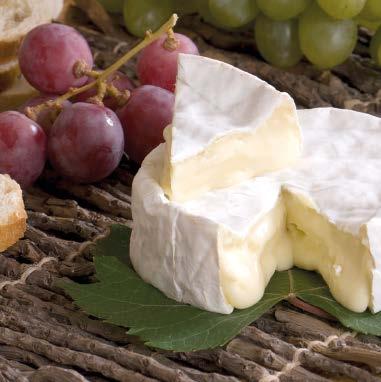
LE CAMEMBERT EST LE FROMAGE LE PLUS VENDU1 EN FRANCE
La France produit beaucoup de fromages et le camembert est très apprécié. Mais... il n’est pas le plus vendu en France! C’est la mozzarella, un fromage italien, le fromage le plus vendu en France.
Comprehension activities
1 sold
The comprehension activities target the interpretive mode, which calls on students to show deeper understanding, make inferences, etc.
Parcours (Skim) l’article rapidement.
Trouve...
1. un produit qu’on prend au petit déjeuner en France.
2. une spécialité que peu de (that few) Français mangent.
3. le nom d’un fromage français.
4. le nombre de baguettes produites par an.
Lis l’article.
Dis si les phrases sont vraies ou fausses.
1. Les enfants français prennent des croissants au déjeuner.
2. La baguette est le pain préféré des Français.
3. La mozzarella est un fromage français.
4. Peu de restaurants français proposent des escargots.

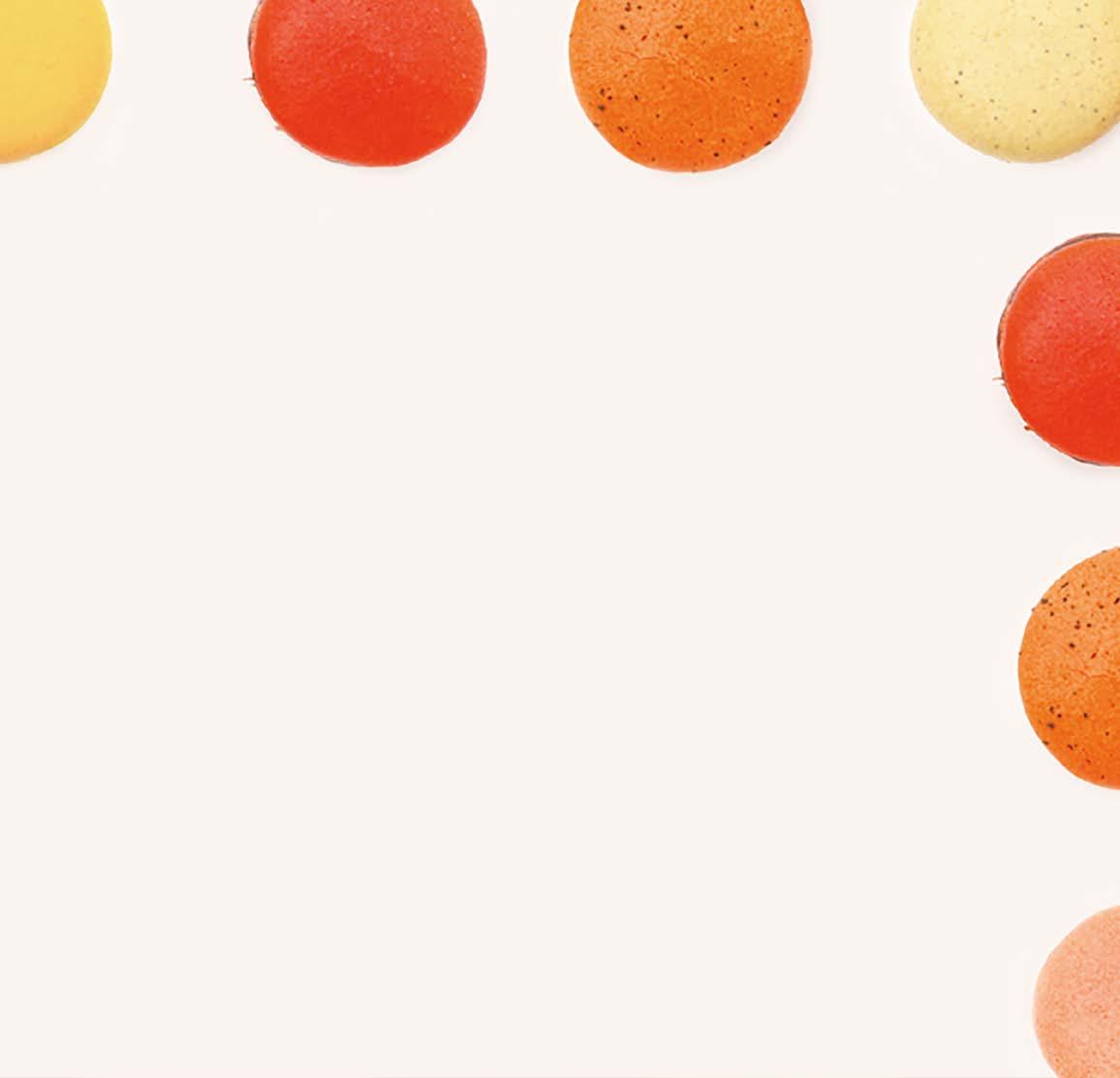
LE CROISSANT EST LA VIENNOISERIE2 PRÉFÉRÉE DES FRANÇAIS
D’habitude, les Français mangent des croissants au petit déjeuner, surtout3 le week-end. Les enfants mangent aussi, parfois4, des croissants au goûter.
2 pastry 3 mostly 4 sometimes

LES FRANÇAIS MANGENT BEAUCOUP D’ESCARGOTS ET DE CUISSES DE GRENOUILLE5
Beaucoup de Français ne consomment pas ces spécialités et elles sont assez rares sur les menus des restaurants.
5 frog legs

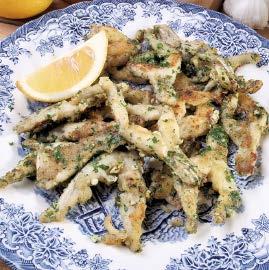
Pense à ta culture. Réponds à ces questions.
1. Dans ta culture, est-ce qu’on aime le fromage? Quels fromages?
2. Qu’est-ce qu’on prend souvent (often) au petit déjeuner?
3. Est-ce qu’on mange beaucoup de pain? Quels types de pains?
4. Quelle spécialité est typique dans ton pays ou ta région?
On représente souvent les Français avec un béret sur la tête et une baguette sous le bras6 . Est-ce que c’est un cliché? Le béret, oui; la baguette, non. Six milliards de7 baguettes sont produites chaque année en France. C’est 320 baguettes par seconde! Mais les Français consomment aussi d’autres types de pains: du pain de mie8, du pain pita ou des bagels.
C’est vous les Reporters!
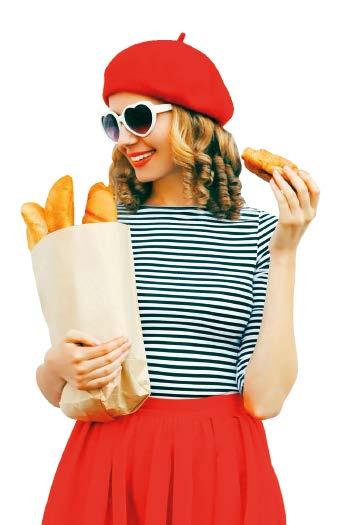
An individual presentational writing or speaking project. It consists of a short journalistic report (written or recorded) that can be seen as a contribution to the Le magazine des Reporters
1. Écris un paragraphe «vrai» et un paragraphe «faux» sur la cuisine dans ta culture.
2. Utilise les textes de l’article comme modèle.
3. Enregistre tes deux textes.
• Adverbs are words that modify the meaning of verbs or other adverbs. They can also be used to express the quantity of something.
(un) peu de assez de beaucoup de trop de few/little/a bit of enough a lot of/many too much/too many
+ noun
• Adverbs of quantity are always followed by de or d’ before a vowel, or a silent h
Nous mangeons peu de viande. We eat little meat. Je ne mange pas assez de céréales. I don’t eat enough grains. Il mange beaucoup d’olives. He eats a lof of olives. Tu prends trop de thé. You drink too much tea.
Observe les quantités des aliments sur les photos. Écris des phrases en utilisant il y a + un adverbe de quantité.




Grammar presentation
Visual, color-coded explanations with diagrams, outlines, examples, and illustrations to help the students internalize the grammatical structures of the lesson.
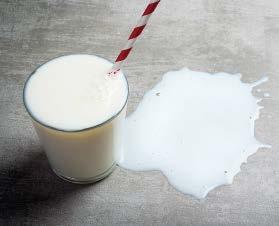

Choisis la réponse correcte.
References to visually appealing Grammar tutorials for each topic.
a. Il y a peu de / beaucoup de riz. Je fais des légumes pour compléter.
b. Tu manges trop de / peu de gâteaux. Ce n’est pas très équilibré.
c. Nous avons assez de / peu de fruits. Tu peux acheter des bananes?
d. Il ne faut pas manger beaucoup de / peu de produits sucrés.
Lis ces phrases sur Walid, un ami de Yassir.
Écris ton opinion et utilise un adverbe de quantité.
a. Walid boit 3 litres d’eau tous les jours. t Il boit trop d’eau.
b. Il mange des gâteaux une fois par mois. t …
c. Il mange trois yaourts pour le dîner. t …
d. Il mange des fruits au petit déjeuner et au dîner. t
WHAT ARE THEY?
Practice activities
Activities to practice the grammatical structures.
• Partitive articles are used when you want to talk about “some” of an item. They are used for items that can’t be counted, like milk. While we can drop the word “some” or “any” in English, you must use partitive articles in French.
Tu veux du pain?
WHAT FORMS DO THEY HAVE?
Do you want (some) bread?
du pain, de l’oignon de la salade, de l’eau des légumes
WHEN DO WE USE THEM?
• When discussing food and beverages, partitive articles are generally used with verbs related to eating and drinking (manger, boire, prendre).
Je mange du riz. I eat (some) rice. Je prends de l’eau. I will have (some) water..
• In negative sentences, the partitive article always becomes de (or d’ before a vowel or a silent h). Je suis végétarienne. Je ne mange pas de viande. I’m a vegetarian. I don’t eat meat.
• Verbs of preference (aimer, préférer, adorer) are generally followed by definite articles. J’adore le chocolat. I love chocolate.
Dans le frigo de Yassir, il y a des fruits… Il n’y a pas de... 15 16 17
Complète les phrases avec un article partitif. Attention aux formes négatives!
a. Je mange du pain tous les jours.
b. Je ne mange pas pain tous les jours.
c. Tu veux viande pour le dîner?
d. Tu ne veux pas viande pour le dîner?
e. Elle prend eau.
f. Elle ne prend pas eau.
g. Nous prenons thé à la menthe.
h. Nous ne prenons pas thé à la menthe.
Choisis l’article correct.
a. Alain adore le / du café.
b. Je préfère la / de la pizza.
c. Tu prends le / du riz avec de la viande au déjeuner?
d. Nous n’aimons pas le / du chocolat.
e. Nathalie prend le / du thé à la menthe.
Observe le Frigidaire de Yassir.
Écris quatre phrases pour décrire ce qu’il y a dans son Frigidaire.
Ensuite, écris quatre phrases pour décrire ce qu’il n’y a pas dans son Frigidaire.


3. THE PRESENT TENSE OF THE VERBS MANGER AND PRENDRE
WHAT FORMS DO THEY HAVE?
MANGER TO EAT
je mange nous mangeons tu manges vous mangez
il/elle/on mange ils/elles mangent
Nous mangeons des croissants au petit déjeuner. We eat croissants for breakfast.
PRENDRE TO TAKE, TO HAVE (food and beverages)
je prends nous prenons tu prends vous prenez
il/elle/on prend ils/elles prennent
Au Maroc, on prend le petit déjeuner entre 6h30 et 9h. In Morocco, we have breakfast between 6 am and 9 am.
For verbs that end in -ger in French, the nous form ends in -eons instead of -ons
The root prend- changes to pren- for the nous and vous forms, and to prenn- for the ils/elles form.
Complète les phrases suivantes avec les verbes indiqués. prendre
a. Martin prend un jus d’orange, mais Charlotte et Karine du thé.
b. Tu du café?
c. Ma mère de l’eau à tous les repas.
manger
d. Moi, je … des fruits tous les jours, mais mes frères ne … pas de fruits.
e. Mes amis et moi, nous … des croissants au petit déjeuner.
f. Vous … de la soupe tous les soirs?
Complète chaque phrase librement.
a. Pour le petit déjeuner, je prends (prendre) du thé.
b. Mes amis … (prendre) souvent (often) ….
c. Pour le goûter, mes amis et moi, nous … (prendre) ….
d. Pour le dîner, je … (manger) souvent ….
e. Ma famille ne … (manger) pas ….
En groupes de trois, parlez de ce que vous aimez manger à chaque repas.
Au petit déjeuner, je mange…
4. GIVING SUGGESTIONS: IL FAUT + INFINITIVE
• To say what must be done or what is necessary, you can use il faut with an infinitive. Il faut manger des légumes tous les jours. You should eat vegetables everyday.
• If you want to express what shouldn’t be done, you can use the negative form il ne faut pas with an infinitive.
Il ne faut pas manger trop de sucre You shouldn’t / must not eat too much sugar.
a. Il faut prendre un petit déjeuner. 21 22 23
Complète les phrases suivantes avec tu ou il faut.
a. Il faut manger des produits laitiers.
b. … boire de l’eau.
c. … manger des fruits.
d. … prends du jus d’orange au petit déjeuner.
e. … manges trop de sucre.
f. … manger équilibré.
Tes amis ont besoin de conseils.
Écris des phrases avec il faut ou il ne faut pas avec un infinitif.
a. Je ne bois pas d’eau. t Il faut boire de l’eau.
b. Je n’aime pas les fruits. t …
c. Je n’aime pas les légumes. t …
d. Je mange du chocolat tous les jours. t …
e. Je ne prends pas de petit déjeuner. t …
f. Je mange beaucoup de produits sucrés. t …
g. Je mange des pâtes deux fois par jour. t …
Écris un conseil pour chaque image.
Utilise il faut ou il ne faut pas avec un infinitif.
4 conseils pour bien manger
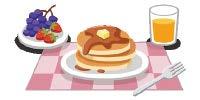



5. THE PRONOUN ON
• Depending on context, the impersonal pronoun on can mean:
1. Everyone, people, one = les gens
Au Maroc, on déjeune vers 13h. In Morocco, people have lunch at around 1 p.m.
2. we = nous (see The pronoun on p. 95)
Dans ma famille, on mange de la soupe au dîner. In my family, we eat soup for dinner.
The pronoun on is always conjugated in the third-person singular.
Lis les phrases.
Indique le sens du pronom on: nous ou les gens.
a. On déjeune ensemble jeudi? t nous
b. En France, on déjeune entre midi et 13h00. t
c. Mes sœurs et moi, on prend le petit déjeuner avant d’aller en ville. t
d. Au Maroc, on mange du couscous le vendredi. t
e. Léa, on va dîner au restaurant ce soir? t
Écris les phrases suivantes avec le pronom on.
a. Au Canada, les gens dînent à 18h00. t Au Canada, on dîne à 18h00.
b. Dans ma famille, nous prenons le petit déjeuner ensemble (together). t
c. En France, les gens mangent souvent des fruits pour le dessert. t
d. Dans mon pays, les gens mangent beaucoup de viande. t
e. Nous allons souvent prendre un chocolat chaud le mercredi. t
Dis quelles habitudes alimentaires les habitants ont dans ta région.
Utilise le pronom on dans tes réponses.
Mentionne…
• l’heure des repas
• les plats pour chaque repas
• les aliments les plus consommés
Dans ma région, on dîne vers 18h…

Vocabulary presentation
A clear, visual presentation: every word is illustrated and translated.
LES CÉRÉALES, FÉCULENTS ET LÉGUMINEUSES grains, starches, and legumes
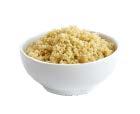

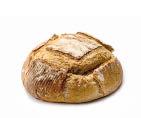
le couscous couscous les lentilles (f.) lentils le pain bread

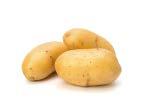
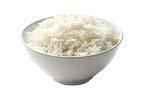
les pâtes (f.) pasta les pommes de terre (f.) potatoes le riz rice
LA VIANDE, LE POISSON, LES ŒUFS ET LES SUBSTITUTS meat, fish, eggs, and substitutes



LES FRUITS ET LES LÉGUMES fruits and vegetables

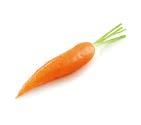

la banane banana le citron lemon

le concombre cucumber

l’oignon (m.) onion
la carotte carrot

la courgette zucchini
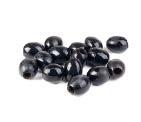
les olives (f.) olives

les dattes (f.) dates
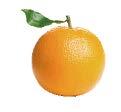
l’orange (f.) orange les œufs (m.) eggs le poulet chicken


le saumon salmon le tofu tofu
la viande meat

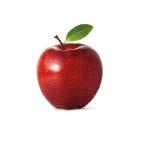

LES PRODUITS LAITIERS dairy products LES MATIÈRES GRASSES fats la pomme apple
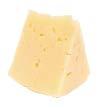

le fromage cheese le lait milk
204 ı deux cent quatre

le yaourt yogurt
le poivron bell pepper la tomate tomato
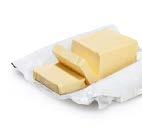
le beurre butter
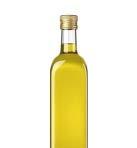

l’huile (f.) oil la sauce sauce
SELF-CHECK QUIZ
LES PRODUITS SUCRÉS sweets
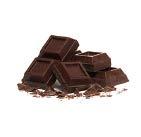
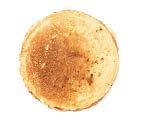

le chocolat chocolate les crêpes (f.) crepes le gâteau cake

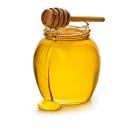
Text recording Students can listen to the words on The KWL Hub.

la glace ice cream le miel honey le sucre sugar
• boire to drink t Je bois beaucoup d’eau.
• être végétarien/ végétarienne to be a vegetarian
• être végétalien/ végétalienne to be a vegan
• manger équilibré to eat a balanced diet
• manger dans un fast-food to eat in a fast food restaurant
• manger de tout to eat everything
• J’adore les fruits. I love fruit.
• Moi aussi. Me too.
• Moi, non. I don’t.
• Je n’aime pas la viande. I don’t like meat.
• Moi non plus. Neither do I.
• Moi, si. I do.
LES BOISSONS beverages

l’eau (f.) water


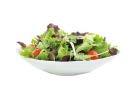
les frites (f.) french fries

la salade salad le jus de fruits fruit juice la soupe soup le thé (à la menthe) (mint) tea
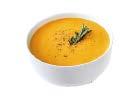


le petit déjeuner breakfast le déjeuner lunch

le goûter afternoon snack le dîner dinner
• prendre le petit déjeuner to have breakfast
• déjeuner to have lunch
• goûter to have an afternoon snack
• dîner to have dinner

• On déjeune entre 12h et 13h. We have lunch between 12 and 1 pm.
• On dîne vers 20h. We have dinner at around 8 pm.
Jeu
1. Your teacher writes twenty words from the unit on the board.
2. Divide the class into two teams. Each team has a flyswatter.
A game offers further training on the vocabulary covered in the lesson.
3. One student from each team goes to the board. Your teacher will read aloud a clue to the word you will need to find. C’est un aliment blanc. C’est un substitut de viande. Les végétariens mangent cet aliment.
Mon lexique
4. The two students race to “hit” the correct word (le tofu) with the flyswatter. The first student to hit the word earns a point for his/her team.
5. When everyone has had a turn, the team with the most points wins.
This activity aims to personalize and expand the vocabulary of the lesson.
Think about what you ate last week. Make a list of the foods you ate and organize them into the food groups on pp. 204-205.
Pronunciation tutorial Each topic goes with an engaging pronunciation tutorial.
t The letters g and c can be hard or soft. A hard g is pronounced [g], as in the English word gum. A soft g sounds like [ʒ], as in the word massage. Similarly, a hard c sounds like [k], as in the word cat. A soft c sounds like [s], like in the word face.
Des Lettres et des Sons
Mon cousin Guillaume mange des courgettes.
A brief explanation followed by recordings to listen to and repeat along with practice activities, and video tutorials.
• The letters c and g are hard before the vowels a, o, or u: carotte, goûter, baguette.
• They are soft before the vowels e, i, or y: sauce, citron, fromage.
• To retain a soft g sound before an a, o, or u, add an e after the g: mangeons
• To retain a soft c sound before an a, o, or u, change the c to ç (c cédille): français.
Say whether the sounds g and c are hard or soft in these words. Listen to the words and check your answers.
Draw the symbol [g] on one side of an index card, and the symbol [ʒ] on the other side.
On another card, draw the symbol [k] on one side, and the symbol [s] on the other. Listen to four sentences and hold up the cards to indicate which sounds you hear. Listen again and practice saying the sentences aloud.
MINI-PROJET 1
ESSENTIAL QUESTION
An Assessment Rubric and Self and Peer Assessment Rubrics based on the ACTFL Performance Descriptors for Language Learners.
t En quoi consiste une alimentation équilibrée?
CONTEXTE
t Tu es un/e vlogueur/vlogueuse et tu donnes des conseils alimentaires à tes abonnés/ées (followers).
PRODUIT
t Une vidéo d’une ou deux minutes avec des conseils pour chaque repas
1. Choisis un jour de la semaine.
2. Fais une liste de conseils alimentaires pour chaque repas de la journée.
3. Utilise tes notes pour écrire un texte.
Alternative
4. Entraîne-toi avant d’enregistrer la vidéo.
5. Enregistre la vidéo.
A digital or a traditional option to adapt the product to different situations
6. Fais le montage de la vidéo. Tu peux ajouter de la musique, un titre, des mots ou des images.
Final product example
A graphic example of a final product.
Au petit déjeuner, il faut manger des fruits…
CONNEXIONS: NUTRITION
A real-life task that students must complete using the grammatical structures, vocabulary, and communication skills they studied and acquired in the lesson.
ALTERNATIVE
Crée un poster de conseils pour bien manger.



IN THIS LESSON, YOU WILL…
• order and pay for a meal in a restaurant
• make a shopping list for groceries
• make purchases in a grocery store
BY USING...
• the futur proche
• expressions of needs
• à / chez
• useful phrases for restaurants and for grocery stores
• vocabulary for menus, quantities, grocery stores, and vendors
AND YOU WILL FIND OUT ABOUT…
• the dirham, the Moroccan currency
• customs in French restaurants
• the metric system
• the souks
• street food in the Francophone world


A. Observe la photo de la page précédente.
1. Quelles langues tu observes sur la photo?
2. Qu’est-ce qu’on peut manger / boire sur ce stand?
B. Lis le chat. Réponds aux questions ci-dessous.
Yassir J’ai faim1. Je vais à la place Jemaa el-Fna. Tu connais2? 2:53
Jade Non! 2:56
Yassir
C’est la célèbre place de Marrakech. Il y a un marché, des spectacles et des stands pour manger! Miam3 J’aime bien le stand nº45. Leur jus de grenade4 est délicieux.
Jade Je veux visiter la place Jemaa el-Fna! 3:02

Yassir Il y a des marchés sympas à Nantes?
Jade
Oui, il y a le marché de Talensac. Il est très grand! Il y a des aliments, des fleurs, de l'artisanat, des vêtements… 3:10
Yassir Trop cool!
1 I’m hungry
2 Are you familiar with (it)?
3 Yum!
4 pomegranate
Le dirham (Dh) marocain est la monnaie officielle du Maroc.
1 dollar américain correspond plus ou moins (more or less) à 9 dirhams, mais cela varie tout le temps (it fluctuates constantly). Il y a cent centimes dans un dirham.
Les billets de banque varient en taille et en couleur. Par exemple, le billet de 20 dirhams est violet et bleu. Le billet de 50 dirhams est vert et jaune.
CONNEXION: ÉCONOMIE
Quel est le taux d’échange (exchange rate) aujourd'hui entre 1 dollar et 1 dirham?

1. Qu’est-ce qu’il y a à la place Jemaa el-Fna?
2. Quel est le stand préféré de Yassir? Pourquoi?
3. Qu’est-ce qu’on trouve au marché de Nantes?
De quelles couleurs sont les billets de banque dans ton pays?
t I can order and pay for a meal in a restaurant.
A. Lis ces extraits de conversation dans un restaurant. Qui dit chaque phrase: le serveur ou les clientes?
• Vous avez choisi?
• Comme entrée, je vais prendre la salade de quinoa. Qu’est-ce qu’il y a dans le millefeuille?
• Il y a du fromage et des légumes. Parfait, pour moi, le millefeuille. a L’addition, s’il vous plaît.
• Oui, tout de suite! b
• Bonjour. La carte, s’il vous plaît.
• Oui, voici la carte. c
• Et comme boisson?
• De l’eau, s’il vous plaît. Je voudrais un thé à la menthe. d
• Et voici! Bon appétit!
• Merci beaucoup, Monsieur. e
B. Mets dans l’ordre le dialogue.
C. Écoute et vérifie.
Cette célèbre tarte est connue dans le monde entier. À LamotteBeuvron, un village situé à 200 km de Paris, deux sœurs, Stéphanie et Caroline Tatin sont propriétaires de l’Hôtel Tatin. Caroline, s’occupe des clients, et Stéphanie prépare les fameuses tartes aux pommes fondantes et caramélisées.
• le/la client/e customer
• le serveur / la serveuse waiter / waitress
• La carte, s’il vous plaît. Can I have the menu, please?
• Vous avez choisi?
What would you like to order?
• Je vais prendre / Je voudrais… I’m going to have / I would like…
• Qu’est-ce qu’il y a dans…? What are the ingredients in…?
• Pour moi, de l’eau. I will have some water.
• Et voici! Here you are.
• L’addition, s’il vous plaît. The check, please.
• Tout de suite! Right away!
LEXIQUE p. 222

L’histoire raconte (tells that) qu’un dimanche, Stéphanie oublie la pâte (forgets the dough) et met dans le four (puts in the oven) uniquement les pommes et le sucre. Quand elle réalise son erreur, elle ajoute (add) simplement la pâte sur les pommes et termine de cuire (finishes cooking) la tarte de cette manière.
Aujourd’hui, elle est dans la carte des desserts de beaucoup de restaurants. On la mange chaude avec un peu de crème ou de la glace à la vanille.
LIRE ET PARLER
A. Lis le texte. Qui a créé la tarte Tatin? Comment elle se prépare? Comment on la mange aujourd’hui?
B. COMPARAISON CULTURELLE Est-ce qu’il y a un dessert similaire dans ton pays?
Est-ce qu’il existe une légende sur une spécialité de ton pays?
ET PARLER
Yassir et ses parents vont au Zeitoun Café.
Lis le menu du restaurant.
Écoute et dis ce qu’ils vont prendre comme:
1. entrée
2. plat principal
3. dessert 4. boisson
Comme entrée, la mère de Yassir va prendre…
Menu déjeuner
Entrée + plat
100 Dhs
Plat + dessert
100 Dhs

Entrée + plat + dessert
130 Dhs
Entrées
Salade de quinoa (VÉG.)
Salade de lentilles (VÉG.)
Millefeuille de fromage de chèvre (VÉG.)

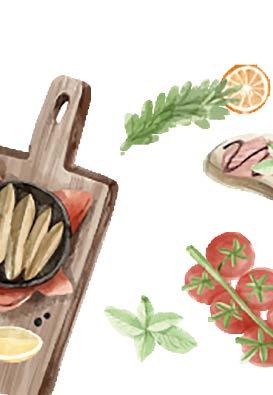
En groupe de trois, jouez une scène au Zeitoun Café.
Deux élèves sont les clients/es.
L’autre élève est le serveur ou la serveuse.
• Saluez le serveur / la serveuse.
• Demandez le menu du jour.
• Commandez les boissons.
• Commandez une entrée et un plat.
• Demandez l’addition.
• Bonjour, monsieur. Le menu, s’il vous plaît.
• Voici. Vous avez choisi?
• Oui, je vais prendre...
GRAMMAIRE
THE FUTUR PROCHE : ALLER + INFINITIVE
Je vais prendre la salade. I will have the salad.
Nous allons prendre du thé. We will have some tea.
GRAMMAIRE p. 218
Plats principaux
Poulet grillé
Pâtes à la tomate
Tajine de poulet, olives, citron
Couscous de poulet
Desserts
Salade d’oranges
Yaourt
Glace au chocolat
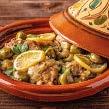
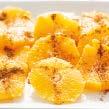
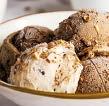
LA CARTE The menu
• l’entrée (f.) appetizer
• le plat principal main course
• le dessert dessert
• les boissons (f.) beverages
LES SENSATIONS
• avoir faim to be hungry
• avoir soif to be thirsty
LEXIQUE p. 222
Ma liste de courses
I can make a shopping list for groceries.
A. Observe les photos et les ingrédients.
Devine quels ingrédients il faut pour préparer ces desserts. Pour les crêpes au chocolat, il faut un litre de lait…
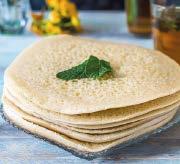



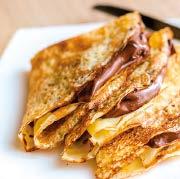



B. Écoute la conversation. Quelle recette (recipe) choisit Yassir?
Vérifie tes hypothèses à l’activité A. Quels ingrédients sont cités dans l’audio et ne sont pas sur la page?
C. À deux, pensez à un plat que vous aimez manger. Écrivez les ingrédients et les quantités qu’il faut pour réaliser ce plat.
Pour faire des macaronis au fromage, il faut un paquet de pâtes et…

LES QUANTITÉS Quantities
• une boîte a carton
• une bouteille a bottle
• 50 grammes (m.) 50 grams
• un kilo a kilo
• un litre a liter
• un paquet a packet
• une tablette a bar
• une tasse a cup
EXPRESSING NEEDS
• il faut + quantity + ingredient il faut du chocolat.
You need some chocolate
• Avoir besoin de + noun
On a besoin d’un litre de lait. We need a liter of milk.
GRAMMAIRE p. 219
Dans la plupart des pays dans le monde, on utilise le système métrique. Le système métrique utilise le mètre, le litre et le kilogramme comme unités de base de longueur (length), de volume et de masse.
CONNEXIONS: MATHÉMATIQUES
Dans ton pays, quelles mesures équivalentes utilises-tu pour les mètres, les litres et les kilogrammes?
Step-by-step approach
ET PARLER
Avant la vidéo
A. Regarde l’image et lis la légende (source).
Où est-ce que les Marioles Trotters font les courses?
All of the videos and some of the texts offer a step-by-step approach to help students understand, interpret, and analyze what they see or read.

Regarde la vidéo
B. Lis les phrases.
Dis si elles sont vraies ou fausses.
1. Dans cette ville marocaine, il n’y a pas de supermarchés.
2. Dans un souk, tous les produits sont chez des commerçants différents.
3. Les fruits et légumes sont chers.
C. Lis la liste de courses des Marioles Trotters.
Regarde à nouveau la vidéo.
Dis les aliments qu’ils prennent.
• Des tomates
• De la salade
• Des grenades
• Des carottes
• Des bananes
• Des OLIVES
• Des poivrons
• Des avocats
• DES ÉPICES
• DES concombres
LEÇON 2
Workbook pp. 121-123
FAIRE LES COURSES
To go grocery shopping
• acheter to buy
• J’achète des légumes au marché. I buy vegetables at the market.
• Ils/Elles achètent des fruits au souk. They buy fruit at the souk.
• la liste de courses shopping list
p. 224
Les souks sont des marchés où on trouve de tout: des vêtements, des objets d’artisanat, de la nourriture, etc.
Dans les souks de Marrakech, il y a plus de 2500 commerçants et peu de prix sont affichés parce que marchander (bargaining) est une tradition.
COMPARAISON CULTURELLE
Est-ce qu’il y a des marchés dans ta ville ou ta région? Qu’est-ce qu’on vend dans ces marchés?
t I can make purchases in a grocery store.
LIRE ET PARLER
Lis les dialogues.
Associe chaque dialogue à la photo du magasin correspondant. Attention, seulement (only) trois images correspondent aux dialogues.
Client: A
Commerçante:
Client:
Commerçante:
Bonjour, Monsieur.
Bonjour, je voudrais du poulet, s’il vous plaît. Vous désirez autre chose? Non merci, c’est tout!
FAIRE LES COURSES To go grocery shopping
• le/la commerçant/e vendor
• Qu’est-ce que je vous sers? What can I get you?
Cliente: B
Commerçant:
Cliente:
Commerçant:
Bonjour, Madame. Qu’est-ce que je vous sers?
Bonjour, je vais prendre un kilo de tomates. Ce sera tout? Oui, merci!
• Vous désirez autre chose? Would you like something else?
• Ce sera tout? Anything else?
• C’est tout! That’s all!
Commerçant:
Cliente:
Commerçant: C
Bonjour! Bonjour! Deux baguettes et quatre croissants, s’il vous plaît. Voici, Madame. Ça fait 6 euros. Merci!
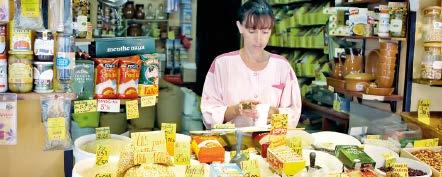


• Ça fait 2 dirhams / dollars / euros. It is 2 dirhams / dollars / euros.
LEXIQUE p. 224


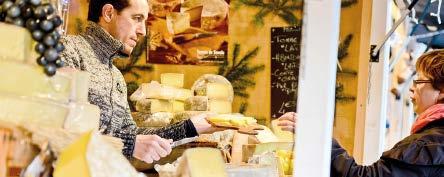
ÉCOUTER ET PARLER
A. Écoute trois conversations.
Identifie le lieu de chaque dialogue.
Le dialogue 1, c’est chez
B. Écoute à nouveau les conversations.
Quels aliments et quelles quantités le client achète dans chaque magasin?
Le client achète…
Communication examples Examples of answers to serve as a guide for students. They are always written in blue and the grammatical structures are highlighted in yellow.
C. Quel plat le client peut réaliser avec ces ingrédients?
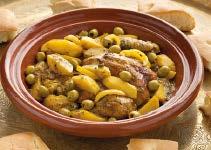
de poulet aux olives
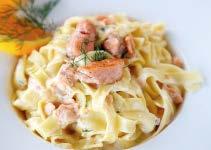

ÉCRIRE ET INTERAGIR
Par groupes de quatre, imaginez que vous êtes trois commerçants/es et un/e client/e.
Lisez la liste des courses du/de la client/e.
Dites les commerces où il/elle va aller.
Écrivez les conversations entre le/la client/e et les commerçants/es. Jouez la scène.
• du beurre
• 1 litre de lait
• 1 kilo de tomates
• des carottes
• deux baguettes
LEÇON 2
Workbook pp.
LES COMMERCES Stores
• la boucherie butcher’s
• la boulangerie bakery
• l’épicerie grocery store
• la fromagerie cheese store
• le marché market
• la poissonnerie fish store
• le souk marketplace (North Africa and the Middle East)
LES COMMERÇANTS/ES
Vendors
• le boucher / la bouchère butcher
• le boulanger / la boulangère baker
• l’épicier / l’épicière grocer
• le fromager / la fromagère cheese vendor
• le/la marchand/e de fruits et légumes greengrocer
• le poissonnier / la poissonnière fishmonger
LEXIQUE p. 223 LEXIQUE
À / CHEZ
• à + a place Je vais à la boulangerie I’m going to the bakery.
• chez + a person Je vais chez le boulanger. I’m going to the baker’s.
GRAMMAIRE p. 221 GRAMMAIRE

par Yassir Benjelloun, reporter de Marrakech, Maroc
La cuisine de rue, ou street food, est très populaire à Marrakech. Mais on aime aussi la cuisine de rue ailleurs1 .
Je vais vous présenter quelques options de cuisine de rue dans d’autres pays et régions francophones. 1 elsewhere
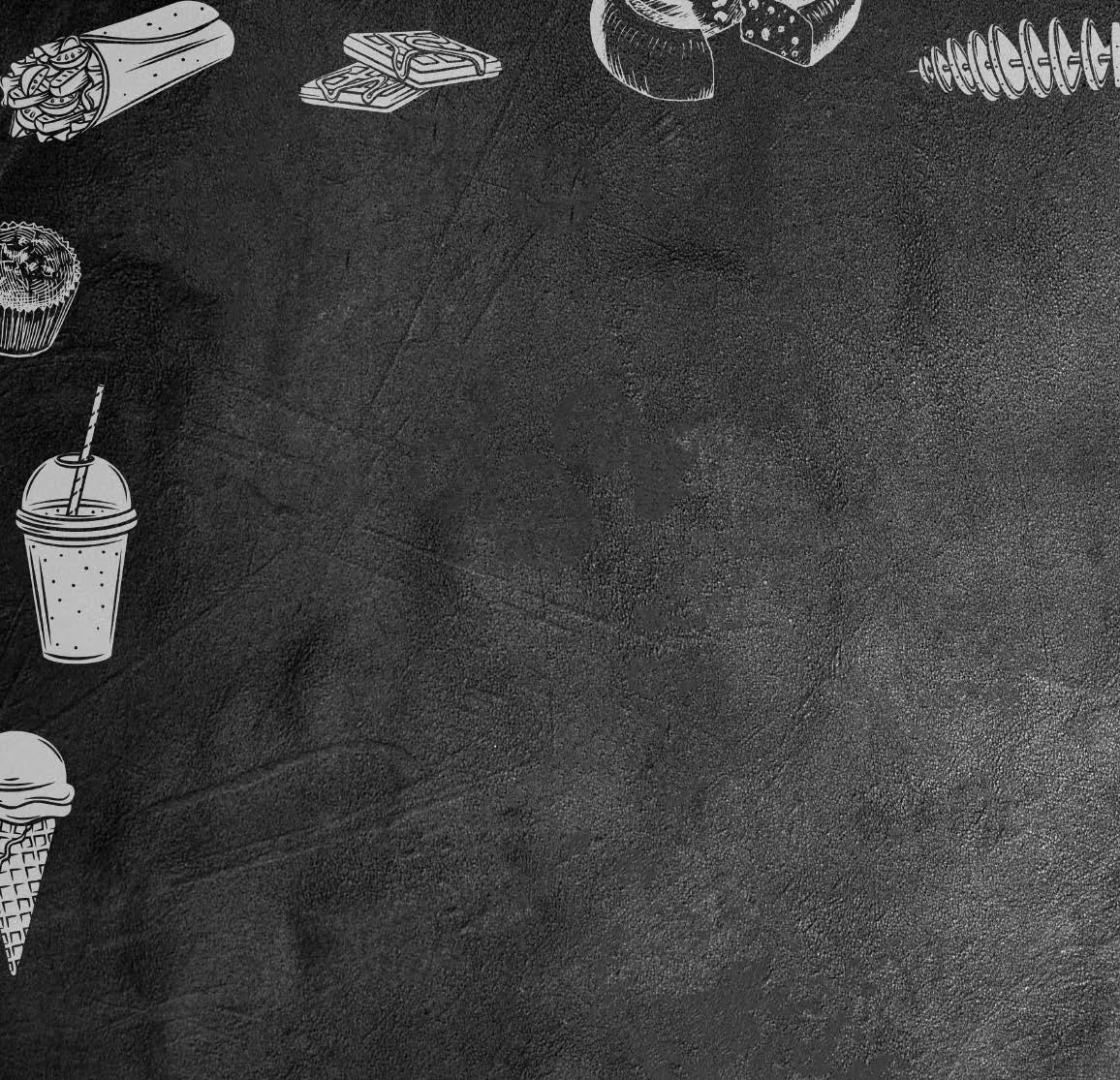
Lis l’article.
Trouve l’équivalent de ces mots en français.
1. raw vegetables
2. sausage
3. buckwheat pancake
4. spicy
5. coconut water
CONNEXIONS: CUISINE
t I can identify the main idea and some details in an article about street food in Francophone countries or regions.
Le kebab est un type de sandwich très apprécié en France. Il a ses origines au Moyen-Orient2. Le kebab est servi dans un pain pita. Il est composé de viande grillée sur une broche3, de crudités (salade verte, tomates, oignons) et de sauce. Pour une version végétarienne de ce sandwich, on remplace la viande par des falafels, des croquettes de pois chiches4. Le restaurant où on achète les kebabs est… le kebab!
2 Middle East 3 spit 4 chickpeas


Lis à nouveau l’article. Réponds aux questions.
1. Quels endroits (places) proposent de la cuisine de rue dans les pays et régions francophones?
2. Dans quelles spécialités est-ce qu’il y a de la viande ou du poisson?
3. Quelles spécialités sont végétariennes?


La galette-saucisse est une spécialité de la Bretagne, en France. C’est une saucisse de porc grillée servie dans une galette de sarrasin. On vend5 cette spécialité sur des stands dans les marchés et les festivals, et aussi devant les stades de football.
5 sell
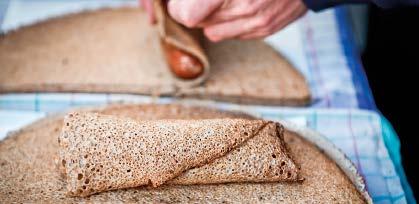
Très populaires dans le nord de la France et en Belgique, les friteries, aussi appelées «baraques6 à frites», sont des stands ou food trucks spécialisés dans... les frites, bien sûr7!
6 shacks 7 of course
Discute avec tes camarades des spécialités de la cuisine de rue mentionnées dans les textes. Dis quel(s) plat(s) tu as envie de goûter (feel like trying) et pourquoi.
Classiques de la cuisine martiniquaise, les accras sont des petits beignets8 épicés au poisson. Ils sont au menu de tous les «lolos», des restaurants de plage ou de bord de route9. Comme boisson, on prend une eau de coco ou un jus de fruit.
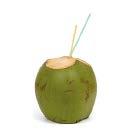
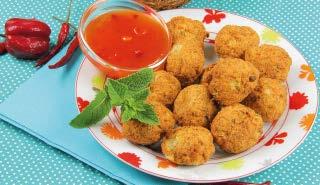
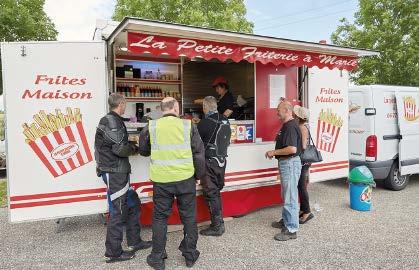
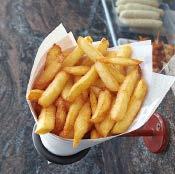
1. Choisis une spécialité typique de la cuisine de rue de ta région.
2. Présente cette spécialité à tes camarades.
3. Décris le plat et ses ingrédients.
4. Trouve des photos sur Internet pour illustrer ta présentation.
dix-sept
• The near future (futur proche) generally expresses an intention, something already planned, or something bound to happen in the foreseeable future. It corresponds more or less to be going to + verb or will + verb.
• The futur proche is formed by the present of the verb aller + an infinitive.
Je vais prendre une salade. I am going to have a salad.
Demain, nous allons acheter du pain. Tomorrow, we are going to buy bread.
On va prendre un thé?
Shall we have some tea?
• To tell what you are not going to do, place ne before the verb aller and pas after it.
Ma mère ne va pas faire les courses. My mother is not going to do the shopping.
• You can also use a conjugated form of aller + the infinitive of aller to tell that you are going to go somewhere.
Mes parents vont aller à la boucherie. My parents are going to go to the butcher’s.
f. Je / une soupe t 14 15
Complète le dialogue suivant avec le verbe prendre au futur proche. Attention: il peut être à la forme affirmative ou négative.
• Tu as faim?
• Oui, j’ai très faim! Je vais prendre le menu. Et toi?
• Moi, non. Je … le menu. Juste un plat et un dessert. Comme plat, je … un steak et des frites.
• Moi, comme entrée une salade et comme plat, je … des pâtes.
• Et comme dessert?
• Finalement, je … de dessert. Je … juste un café.
• Ah bon? Alors moi je … une glace!
• Super!
Dis ce que chaque personne va prendre au restaurant.
a. Kaleb / des crêpes au chocolat t Kaleb va prendre des crêpes au chocolat.

b. Mes amies / une salade t

c. Nous / des frites t …

d. Tu / un jus d’orange t

e. Vous / de l’eau t …


Demande à un/e camarade de classe s’il/si elle va faire les activités suivantes après l’école.
Il/Elle répond.
a. prendre un goûter t Tu vas prendre un goûter après l’école? / Oui, je vais prendre...
b. étudier t …
c. aller à la piscine t …
d. faire les courses t …
e. rester à la maison t …
f. regarder la télévision t …
Écris au moins cinq phrases pour dire ce que les membres de ton entourage vont faire et où ils vont aller ce week-end.
Ma sœur va faire un gâteau et elle va aller à l’épicerie.
WHEN DO WE USE IT?

• You have learned to give suggestions with il faut and an infinitive (see p. 202). You can also use il faut with a noun to express that something is needed.
Il faut acheter du lait.
Pour faire des crêpes, il faut des œufs.
• In the negative form, we use pas de or pas d’.
Il ne faut pas de lait pour les baghrirs.
You need to buy some milk.
To make crepes, you need eggs
• In addition to il faut, you can also use the expression avoir besoin de/d’. The form of avoir must agree with the subject.
J’ai besoin d’aller au marché. I need to go to the store.
Mon père a besoin de farine
My father needs flour
Partitive articles (du, de la, de l’, des) are not used with the expression avoir besoin de.
f. On … farine pour faire un gâteau. 18
Complète les phrases avec les formes correctes de l’expression avoir besoin de
a. Yasmine a besoin de deux baguettes.
b. Mes cousins … acheter des œufs.
c. Nous … un kilo de tomates.
d. Sarah … aller chez le boucher pour acheter du poulet.
e. J’… faire les courses.
deux cent dix-neuf ı 219
19
Lis les ingrédients de la recette de la ratatouille. Complète les phrases suivantes avec il faut + article partitif ou il ne faut pas de/d’.
La ratatouille

a. Il ne faut pas d’œufs.
b. poivrons.
c. tomates. d. viande.
20
Ingrédients
2 courgettes
2 poivrons
3 tomates
1 oignon de l’huile
e. courgettes.
f. poisson.
g. olives h. fromage.
Écris cinq phrases avec un élément de chaque colonne.
faut
J’ai besoin de/d’
œufs lait
sucre
chocolat farine pommes pain pour faire une omelette pour faire un sandwich pour faire une tarte aux fruits pour faire des crêpes 21
Il faut des œufs pour faire une omelette.
En groupes, vous allez créer un plat original à partir d’un plat que vous connaissez.
Choisissez un plat.
Décidez les nouveaux ingrédients de votre plat.
Présentez-le aux autres groupes et expliquez les ingrédients.
C’est une pizza à la viande et aux fruits.
Il faut des bananes…
• To tell when you are going to a place or to someone’s home:
1. if it’s the name of a place, use aller à.
Je vais à la boulangerie.
I am going to the bakery
2. if it’s the name of a person or a profession (like baker, grocer, etc.), use aller chez.
Je vais chez le boulanger.
I am going to the baker’s
• The expression chez moi means at my place. When you use chez, you do not have to add à Marcel dîne chez moi
• You can also use chez with someone’s name.
Tu vas chez Janine après l’école?
Écoute les phrases et dis où sont les personnes.
a. La personne est chez le boucher / à la boucherie.
Marcel is having dinner at my place
Are you going to Janine’s house after school?
Écris des phrases complètes avec les éléments suivants.
a. Mélissa / aller / l’épicier. t Mélissa va chez l’épicier.
b. Kevin / aller / la poissonnerie. t …
c. Les amis de Nora / aller / le boulanger. t …
d. Nous / aller / Sandra. t …
e. Tu / aller / la fromagerie. t …
Téléchargez le plateau de jeu (board game) sur Posez vos pions (pieces) sur «départ» (start)
Lancez un dé.
Dites où vous allez.
Je vais chez mes cousins!
DÉPART
le serveur / la serveuse waiter / waitress

le / la client/e customer
Client/e:
• La carte, s’il vous plaît. Can I have the menu, please?
Serveur/Serveuse:
• Et voici! Here you are.
• Vous avez choisi? What would you like to order?
Client/e:
• Comme entrée / plat / dessert, je vais prendre / je voudrais… As an appetizer/a main course/ a dessert, I’m going to have / I would like…
• Qu’est-ce qu’il y a dans les pâtes? What are the ingredients in the pasta?
• Pour moi, de l’eau. For me, water.
• L’addition, s’il vous plaît. The check, please.
Serveur/Serveuse:
• Tout de suite! Right away!
LES SENSATIONS SENSATIONS

avoir faim to be hungry

avoir soif to be thirsty
l’entrée (f.) appetizer
le plat principal main course
le dessert dessert
les boissons (f.) beverages
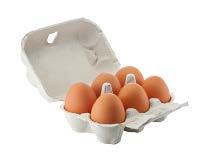
une boîte a carton

un
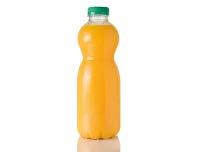
une bouteille a bottle
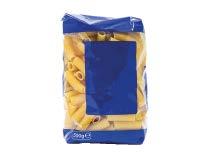
un paquet a packet
50 grammes (m.)

50 grams
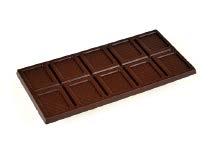
une tablette a bar

un kilo a kilo
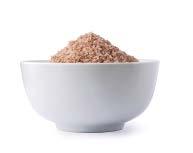
une tasse a cup
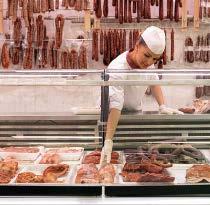
la boucherie le boucher / la bouchère
butcher's - butcher

le/la marchand/e de fruits et légumes greengrocer
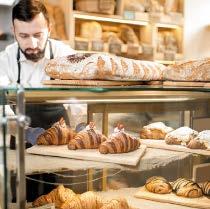
la boulangerie le boulanger / la boulangère
bakery - baker

le marché market
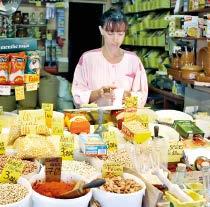
l’épicerie l’épicier / l’épicière
grocery store - grocer

la poissonnerie le poissonnier / la poissonnière
fish store - fishmonger
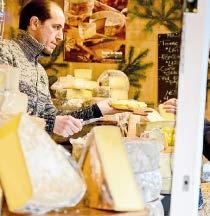
la fromagerie le fromager / la fromagère cheese store - cheese vendor

le souk marketplace (North Africa and the Middle East)
• la liste de courses shopping list
• Qu’est-ce que je vous sers? What can I get you?
• Je voudrais… I would like…
• Je vais prendre… I will take...
• Vous désirez autre chose? Would you like something else?
• Ce sera tout? Anything else?
• C’est tout! That’s all!
• Ça fait 20 dirhams / dollars / euros. It is 20 dirhams / dollars / euros.
• acheter to buy
• J’achète des légumes au marché. I buy vegetables at the market.
• Ils/Elles achètent des fruits au souk. They buy fruit at the souk.
1. In groups of four, students take turns rolling a die. 1 = Food stores, 2 = Vendors, 3 = Expressions a customer would use in a restaurant, 4 = Expressions a waiter/waitress would use, 5 = Quantities, 6 = Expressions you would use in a store
2. The student who rolled the die says one word or expression from that category.
3. If it is correct, he/she earns a point and the game continues.
Think about your favorite dish. List all the ingredients and quantities you need to prepare it. Tell in which stores you would buy the products you need.
t The French [R] sound is very different from the r sound in English.
Ma mère adore le riz et les carottes.
• The French [R] is pronounced in the throat with the mouth open. It sounds similar to a cat purring or a person gargling. Practice making this sound while gargling a small amount of water.
Listen and repeat these sentences.
a. J’adore les crêpes au beurre!
b. Tu préfères les desserts ou le fromage?
c. Florence prend du fromage à l’épicerie.
d. Romain va prendre du riz aux carottes et aux courgettes.
MINI-PROJET 2
ESSENTIAL QUESTION
t Comment la nourriture reflète les cultures francophones?
CONTEXTE
t Tu manges dans un restaurant et tu commandes les plats d’un menu.
PRODUIT
t Une scène entre un serveur / une serveuse et un/e client/e
1. À deux, choisissez le menu du jour (deux entrées, deux plats, deux desserts, deux boissons) que vous allez utiliser pour votre scène.
Créez votre menu ou téléchargez le menu proposé sur
2. Décidez vos rôles: un serveur/une serveuse et un/e client/e.
3. Préparez votre conversation.
Le/La client/e:
- commande une entrée, un plat principal, un dessert et une boisson.
- demande l’addition.
Le serveur/La serveuse prend la commande.
4. Jouez la scène comme au restaurant.

Preparing your scene
To improve your presentation, consider not only your dialogue but your scene. What would be a logical scene for a waiter and a customer? Use props to recreate a restaurant (use pencils as cutlery, a notebook as a menu etc.).
Crée le menu du jour d’un restaurant (entrées, plats, desserts et boissons).
Donne ton menu à tes camarades: ils/elles utiliseront le menu pour leur scène.

Project final
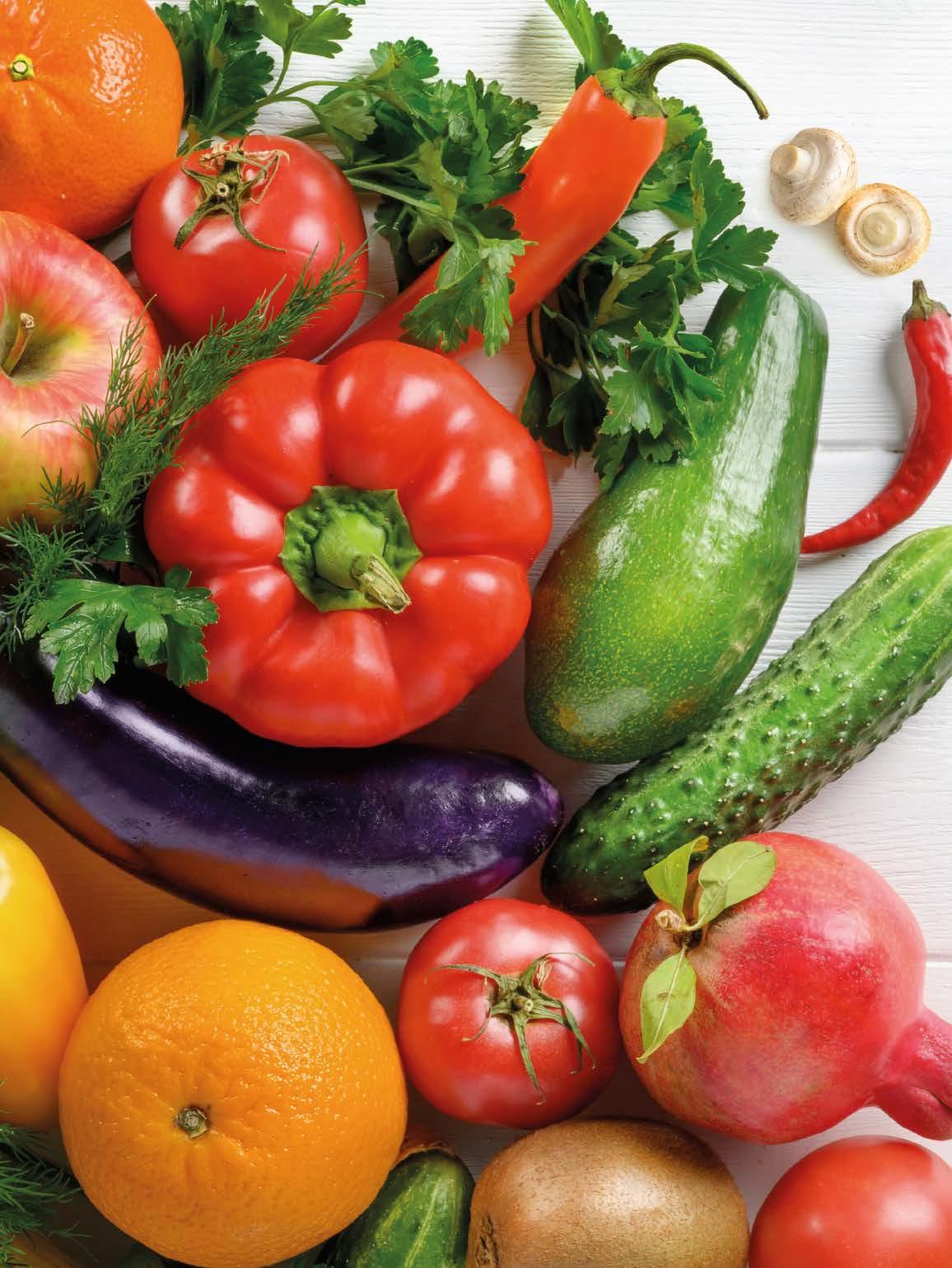
A real-life task that students can perform by using the grammatical structures, vocabulary, and communication skills they studied and acquired in the unit.
CONTEXTE
t Vous participez à un festival de nourriture francophone avec un projet de food truck.
Context and product
PRODUIT
t Six diapositives (slides) pour présenter un food truck de cuisine francophone
BRAINSTORMING
A detailed description of the context in which the task should be completed and a clear explanation of what the final product should look like.
1. À deux, décidez des caractéristiques suivantes pour votre food truck:
• nom et logo
• lieu où se trouve le food truck
• jours et horaires d’ouverture
• 2 entrées, 2 plats et 2 desserts avec leurs ingrédients et leurs prix
• pays d’origine des plats
• boissons et leurs prix
CRÉATION
2. Créez une présentation de maximum six diapositives avec un texte et des images.
PRÉSENTATION
3. Présentez votre food truck à la classe.
4. Votez: Quelle est la meilleure proposition, selon la classe?
Task instructions
Step-by-step instructions to meet the task’s objectives.
Créez une brochure pour promouvoir votre food truck ALTERNATIVE

Stratégie
Tips and strategies for successfully carrying out the task.
• Use the slides to guide your audience through your presentation. Do not write too much information: your goal is to be heard, not read.
• Make sure the visuals are clear and of high quality. Everyone in the audience should be able to see them.
• Make sure you credit the sources of the pictures you use. This is really important if you choose pictures from the Internet.
• Prepare a script of what you want to say for each slide and try to memorize it.
An Assessment Rubric and Self and Peer Assessment Rubrics based on the ACTFL Performance Descriptors for Language Learners.
• Speak clearly and make eye contact with your audience. Eye contact helps you build rapport with your audience and keeps people engaged with your presentation.
• Use facial expressions, hand movements, and gestures to convey your message successfully. It will help you show confidence.
• Try to look both confident and passionate about your topic.
• The slides will help support the presentation. You can look at the screen if you get lost.
Notre food truck s’appelle... Nous avons deux plats principaux...


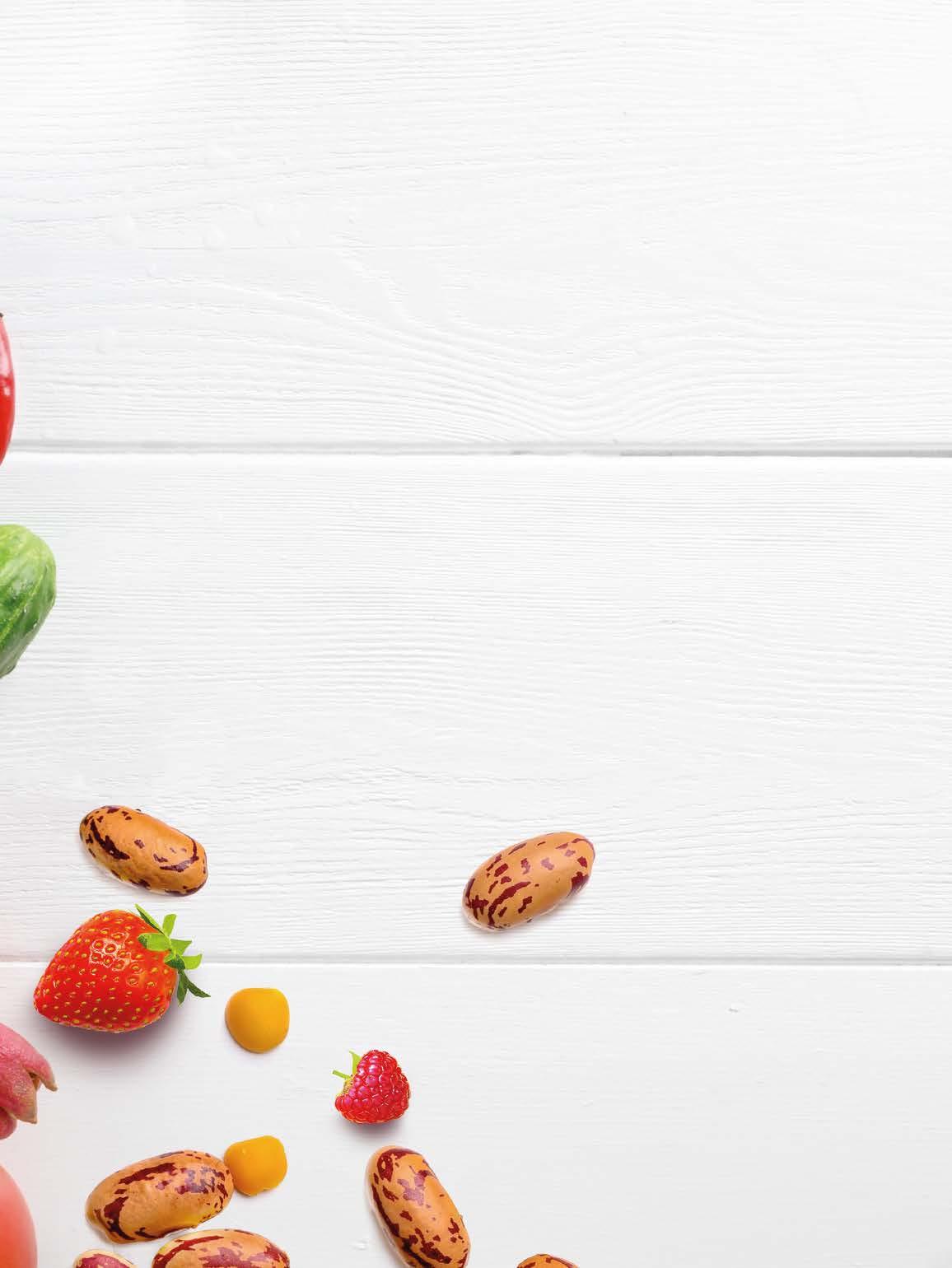
You are going to present your favorite dish. First, you will have an opportunity to view a recipe video. Then, you are going to prepare a presentation describing your favorite dish. Finally, with a partner, you will make a grocery list for the ingredients you need.
A. Look at the screenshot. Answer these questions.
1. Quel âge a Camille?
Real-life communication
Presentational and Interpersonal Communication activities are always real-life examples of communication.
2. Elle va parler de quoi dans la vidéo?
Three Modes of Communication
Activities practice the three Modes of Communication and consolidate the grammar, vocabulary and culture of the unit.

The IPA is based on authentic documents.
B. Watch the video. Answer these questions.
1. De quel type de document il s’agit (interview, publicité, etc.)?
2. Quel est le plat préféré de Camille?
3. Quels sont les ingrédients?
4. Avec qui elle prépare ce plat?
C. What adjective could you use to describe Camille’s favorite dish?
Context
The IPA is introduced by text indicating a context in which the assessment is carried out.
Video cues
As you watch the video, look at its title to help you predict the vocabulary you may hear as you watch it. Can you tell who sponsored this video?
Stratégie Tips and strategies to successfully carry out each activity.